程序设计入门—Python
对象和类型
五种基本对象类型
字符串 (string),简记为 str
使用 ’ ’ 或 ” ” 括起来的一系列字符
整数(integer),简记为 int
十进制:21,八进制:025,十六进制:0x15
浮点数(float)
1.48,21.0,21.,.21,2.1E2
布尔数(boolean),简记为 bool
True,False
复数(complex)
1+1j
对象类型
type('小明')--> <type 'str'>
type('男')--> <type 'str'>
type(15)--> <type 'int'>
type(1.48)--> <type 'float'>
type(43.2)--> <type 'float'>
type('江苏')--> <type 'str'>为什么区分对象类型?
不同类型对象运算规则不同
如:整数的加法和字符串的加法含义不同
不同类型对象在计算机内表示方式不同
5 –> 101,’5’–> 1001101
为何区分整数与浮点数?
浮点数表示能力更强
浮点数有精度损失
1.1 + 1.1 + 1.1 =3.300000000003
CPU有专门的浮点数运算部件强制类型转换
int('123') --> 123
str(123) --> '123'
float('123') --> 123.0
float(123) --> 123.0
bool(123) --> True
bool(0) --> False以下不能 转换
a_str = 'test'
a_num = int(a_str)
#必须是字符中可转换的时候才能转换运算符
算术运算符(Arithmetic Operators)
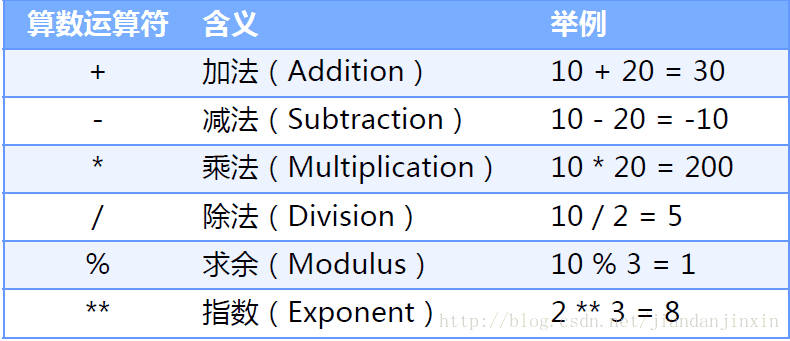
2/3 =0
3.0/6=0.5Python 2 中,“/”表示向下取整除(floor division)
两个整数相除,结果也是整数,舍去小数部分
如果有一个数为浮点数,则结果为浮点数
自动类型转换
若参与运算的两个对象的类型同,则结果类型不变
如:1 / 2 = 0
若参与运算的两个对象的类型不同,则按照以下规则进行自动类型转换
bool –> int –> float –> complex
1.0 + 3 = 4.0
True + 3.0 = 4.0求余运算符
求余运算符(%)
如:10 % 3 = 1
应用
若今天是星期六,则10天后是星期几?
(6 + 10) % 7 = 2
判断一个数 x 是否为偶数
x % 2 是否等于 0
math 模块
模块(module)
实现一定的功能的 Python 脚本集合
引入模块
import module_name
math模块
import math查看模块内容
dir(math)查看帮助
“`
help(math.sin)
dir(math)
[‘doc‘, ‘file‘, ‘name‘, ‘package‘, ‘acos’,
‘acosh’, ‘asin’, ‘asinh’, ‘atan’, ‘atan2’, ‘atanh’, ‘ceil’,
‘copysign’, ‘cos’, ‘cosh’, ‘degrees’, ‘e’, ‘erf’, ‘erfc’, ‘exp’,
‘expm1’, ‘fabs’, ‘factorial’, ‘floor’, ‘fmod’, ‘frexp’, ‘fsum’,
‘gamma’, ‘hypot’, ‘isinf’, ‘isnan’, ‘ldexp’, ‘lgamma’,
‘log’, ‘log10’, ‘log1p’, ‘modf’, ‘pi’, ‘pow’, ‘radians’, ‘sin’,
‘sinh’, ‘sqrt’, ‘tan’, ‘tanh’, ‘trunc’]
“`
关系运算符(Relational Operators)
判断一个数 x 是否为偶数
x % 2 是否等于 0
x % 2 == 0
若为True,则 x 为偶数
若为False,则 x 为奇数
用于判断两个值的关系
大小、相等或不相等
运算的结果只有两种(布尔型)
若结果为True,表示条件成立
若结果为False,表示条件不成立
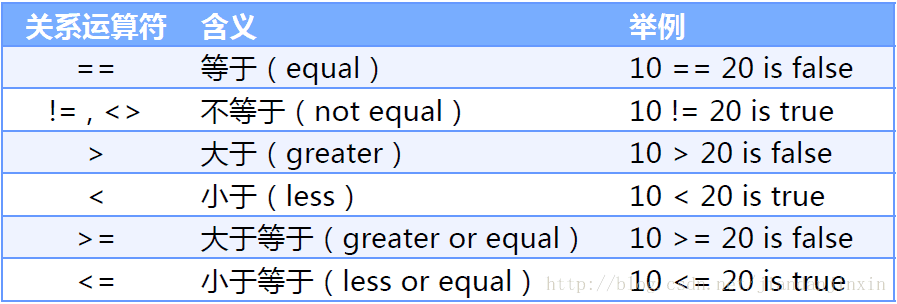
逻辑运算符(Logical Operators)

运算符优先级
看看下面两个表达式
2 * 1 + 3 先乘后加
2 * (1+3) 先加后乘
括号()
改变了语言内在的默认优先级
具有最高优先级
嵌套括号按照由内而外结合
(2 * (1 + 2))**2 == 36
2 * (1 + 2)**2 == 18
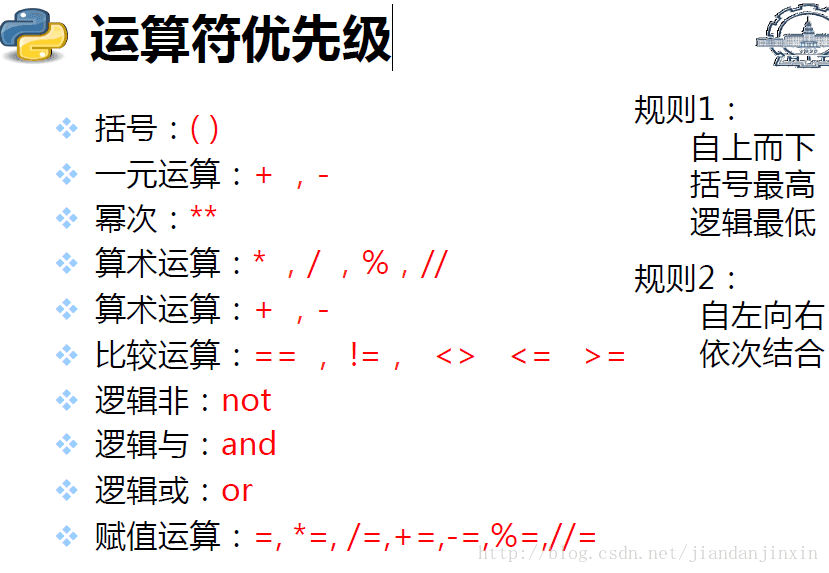
变量

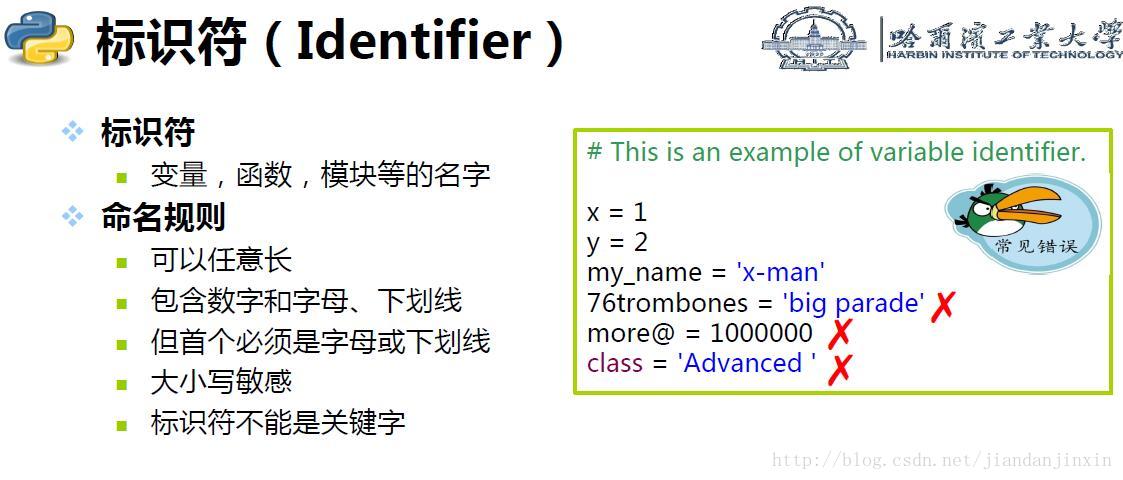
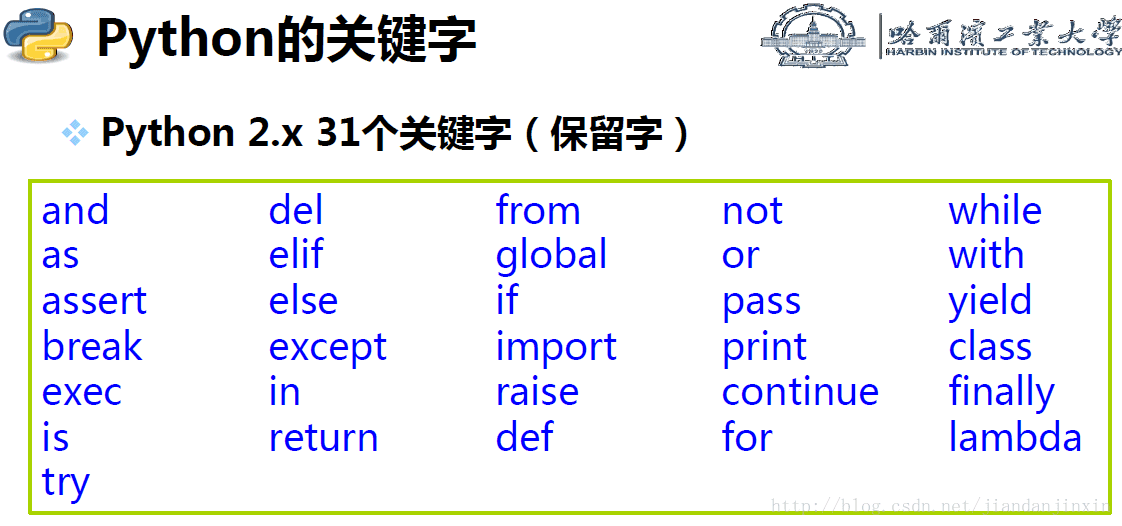
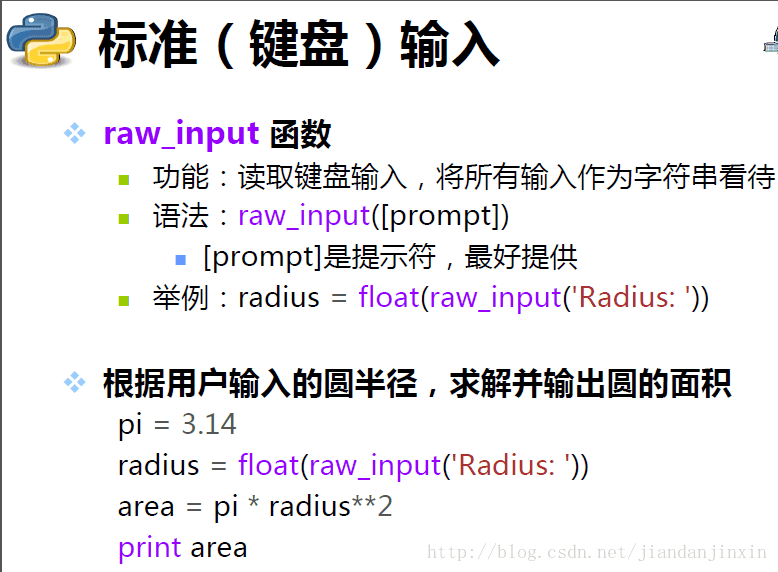
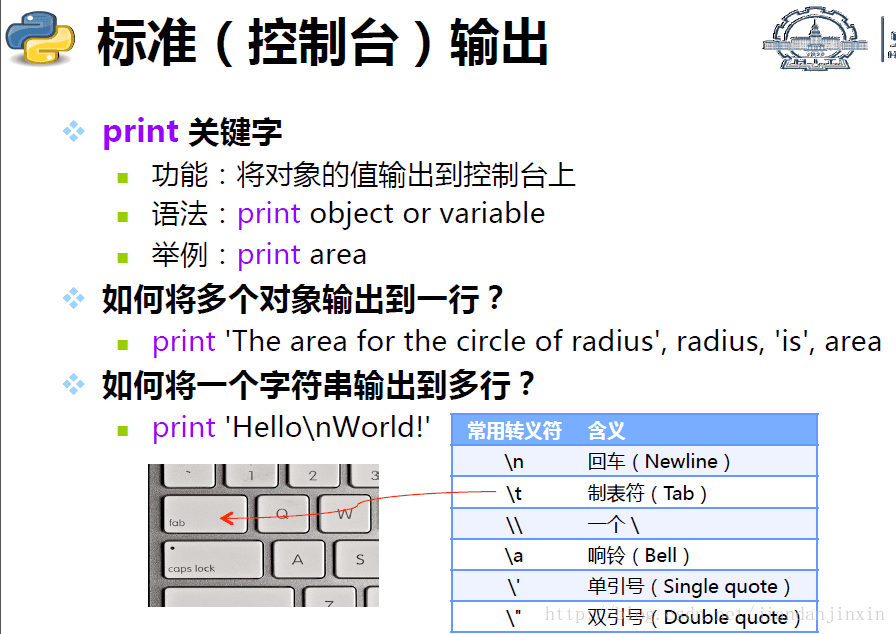
程序控制结构
程序流程图

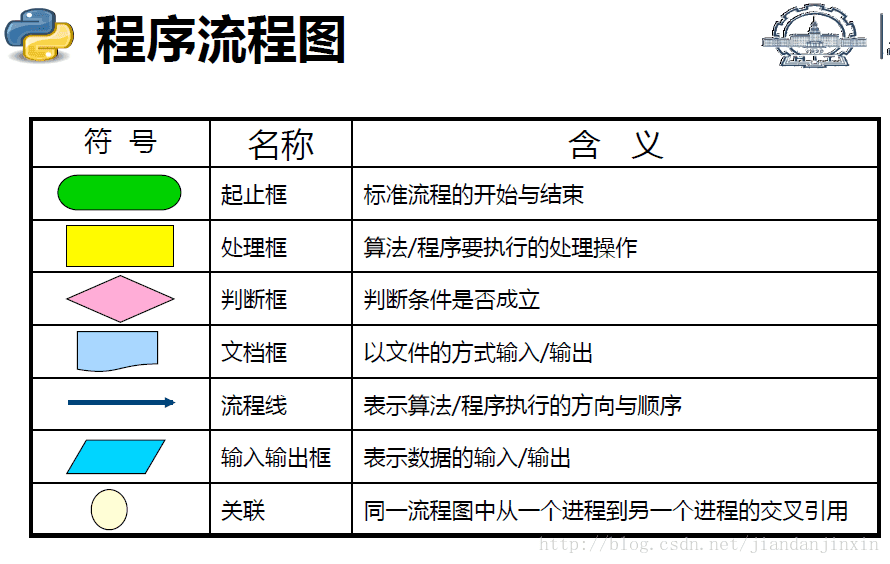
判断语句
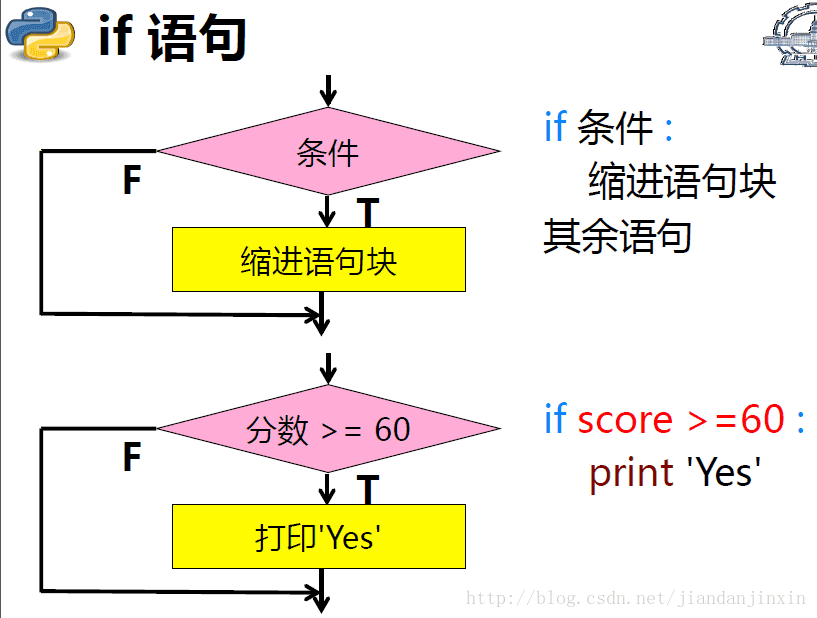
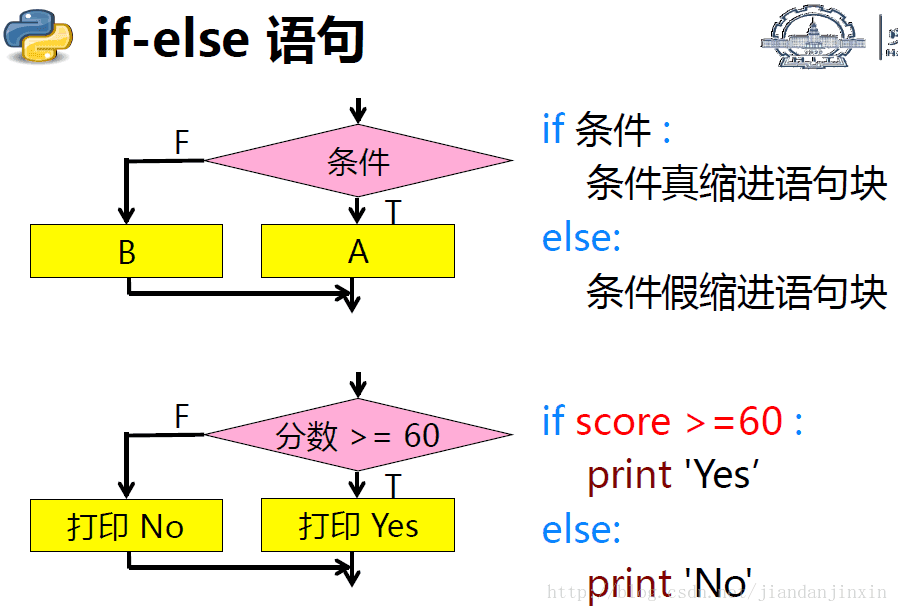
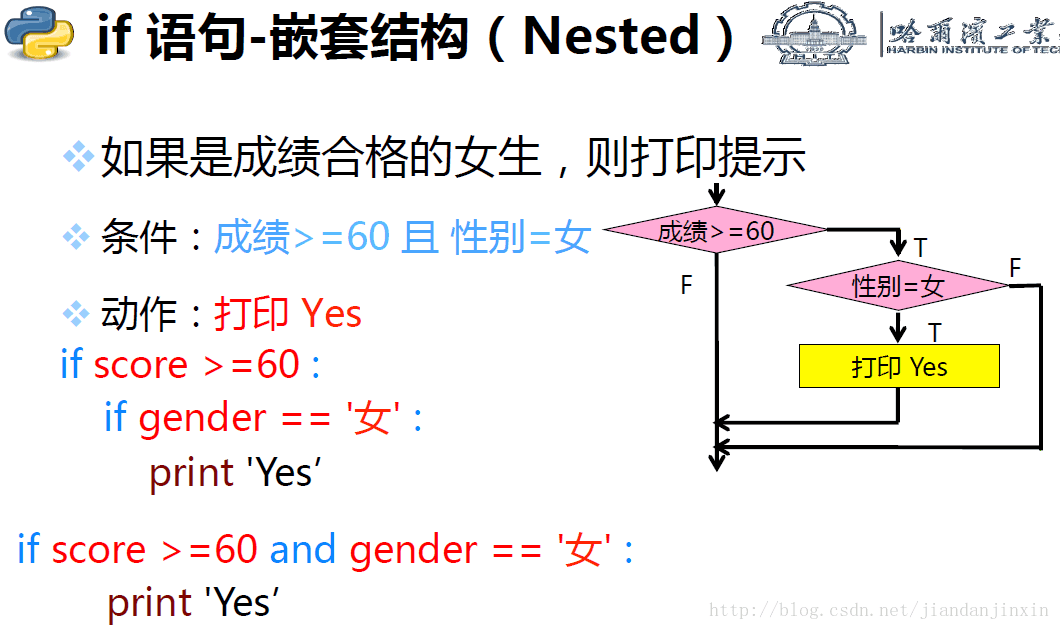
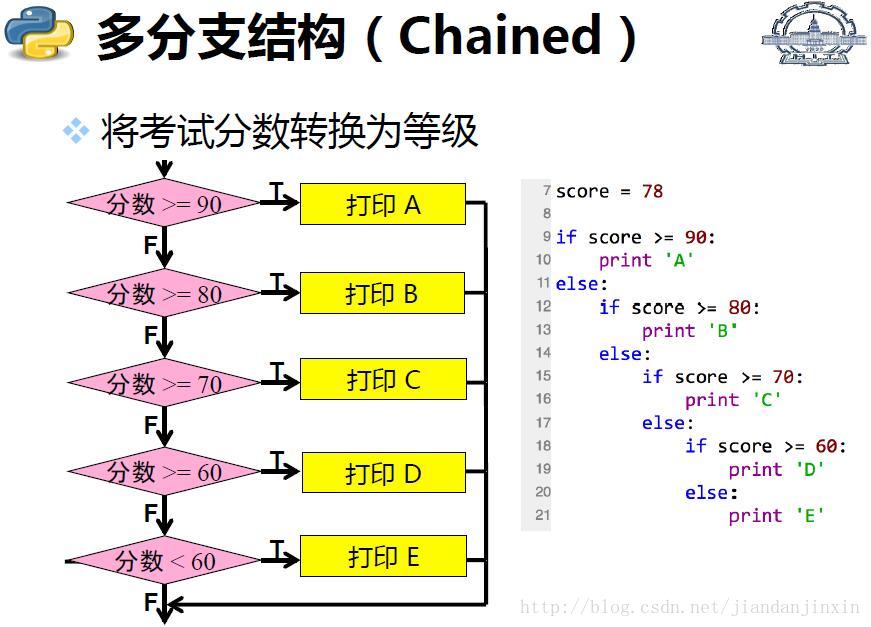
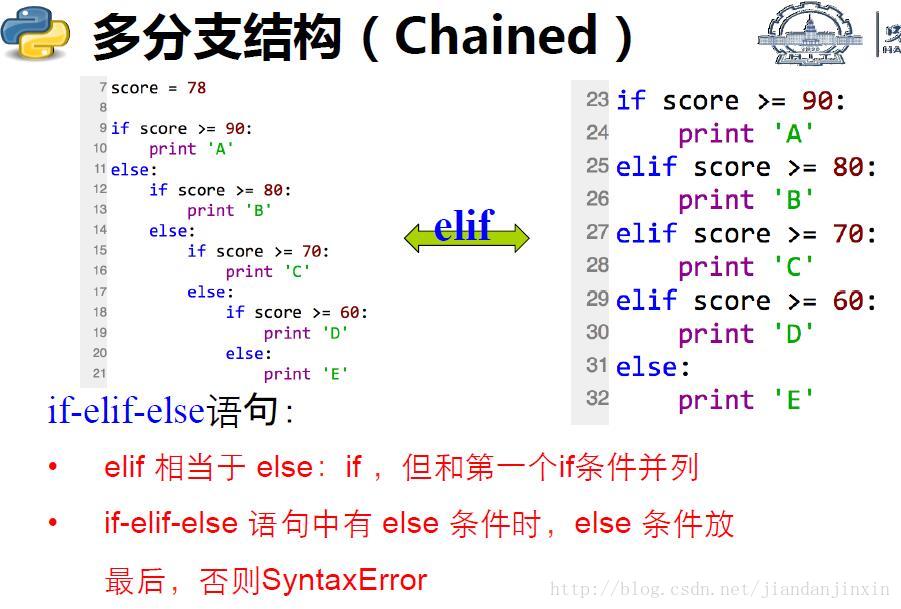
示例
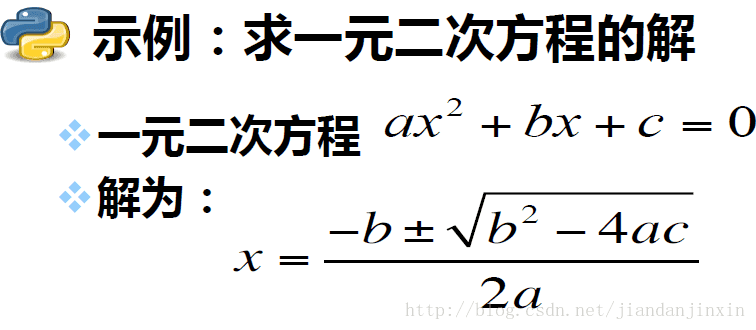
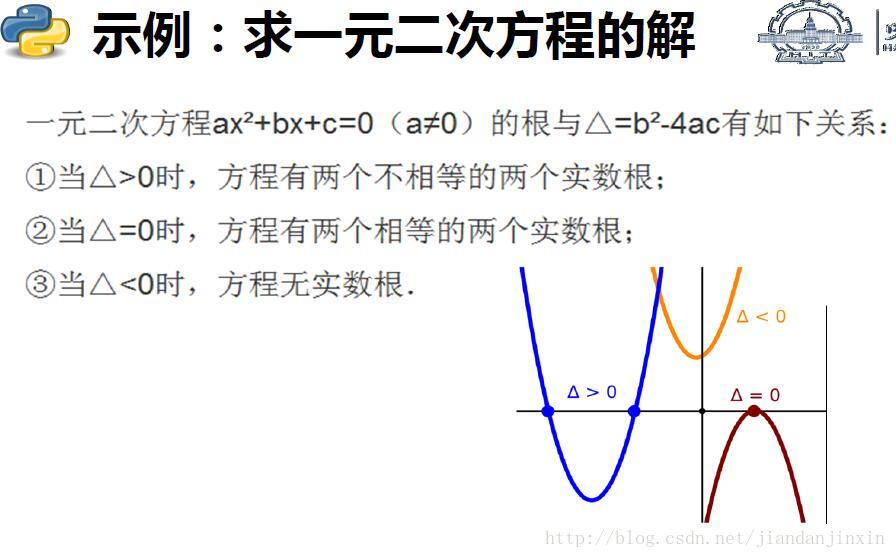
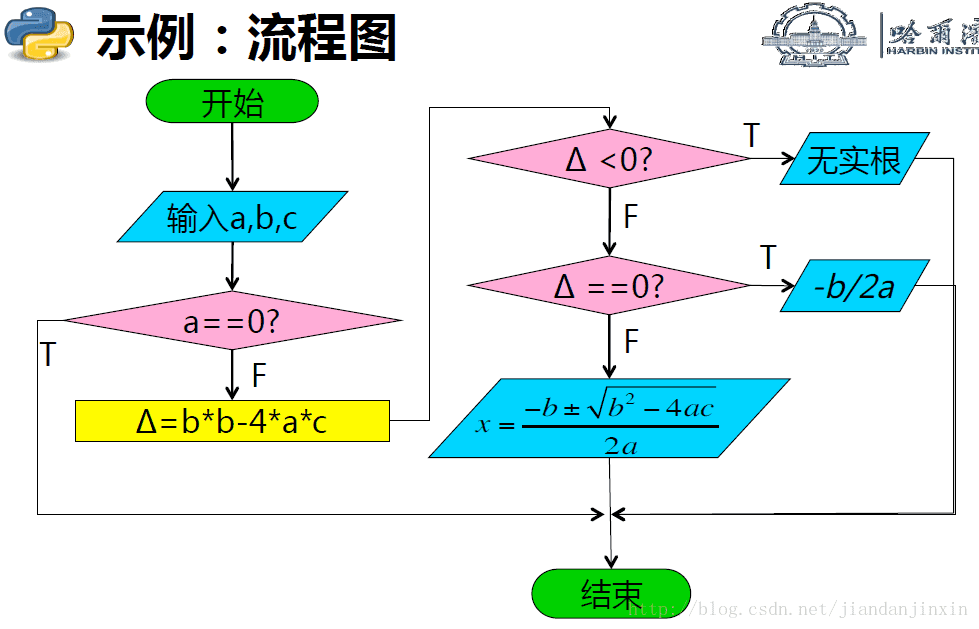
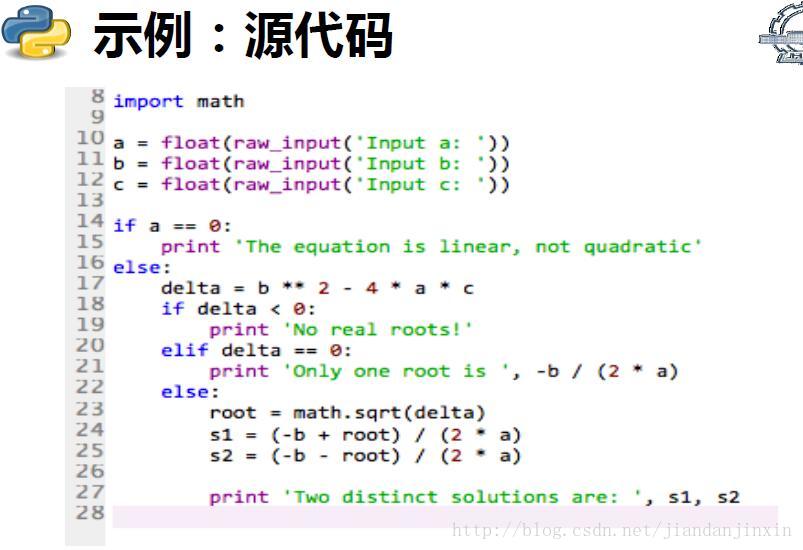
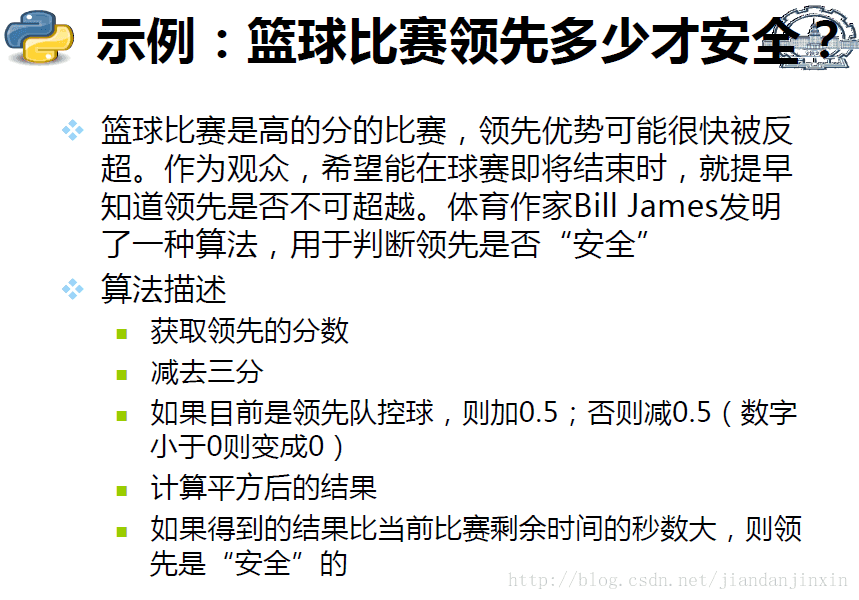
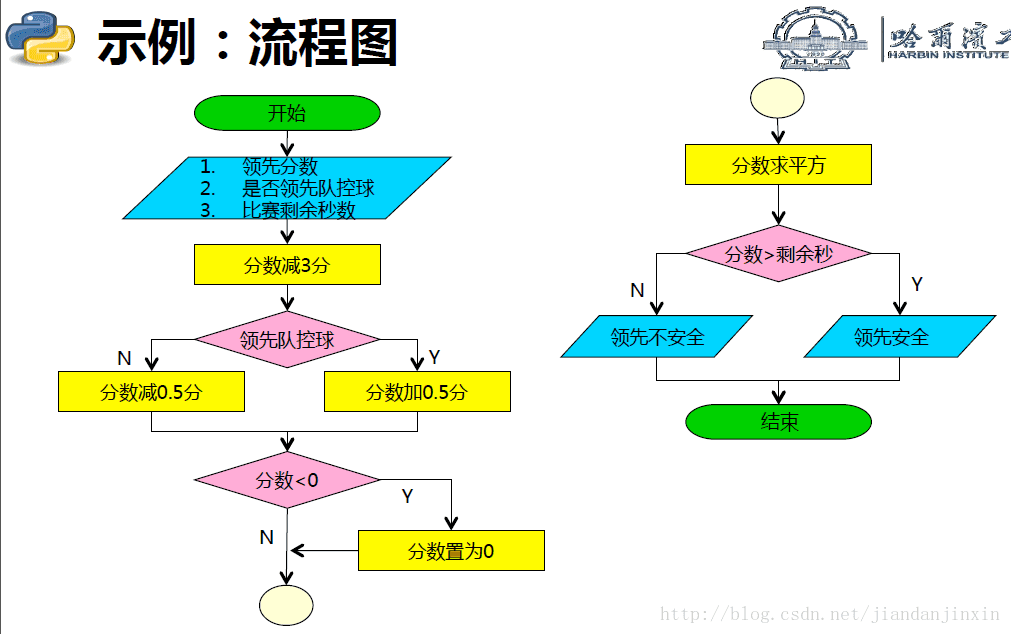
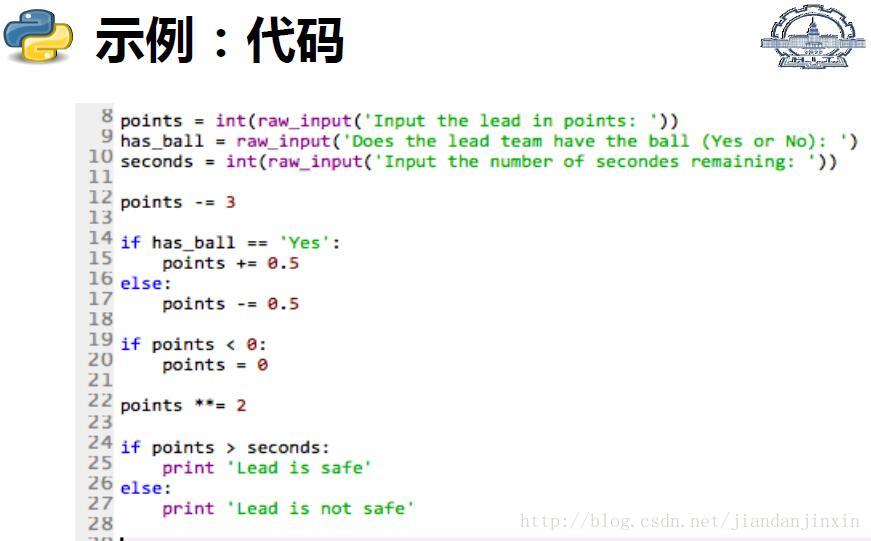
循环结构
While循环结构
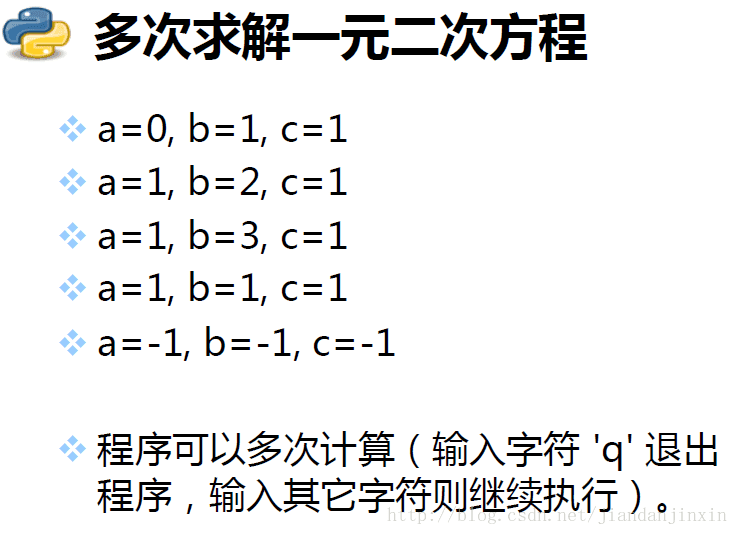


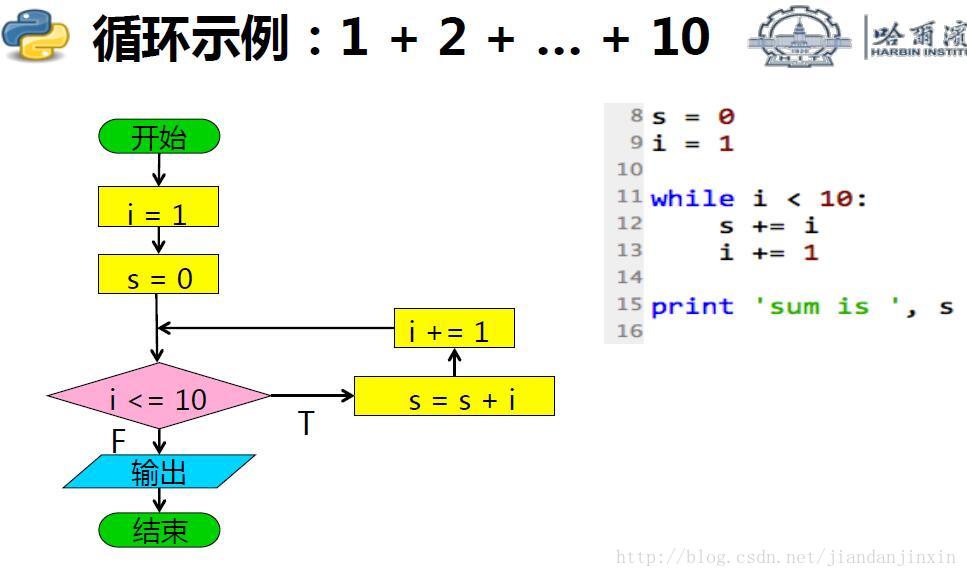
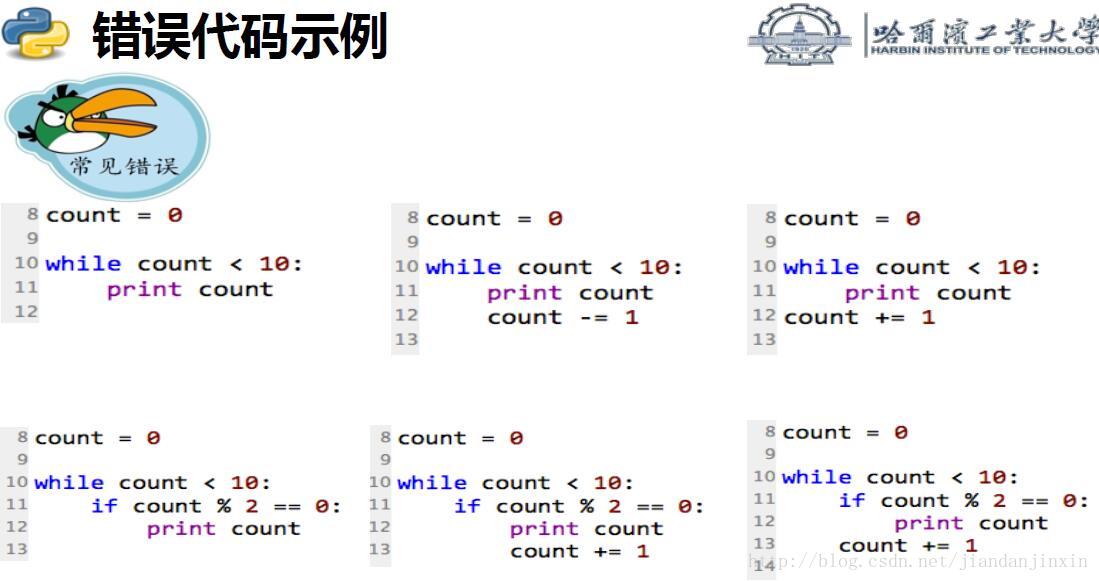
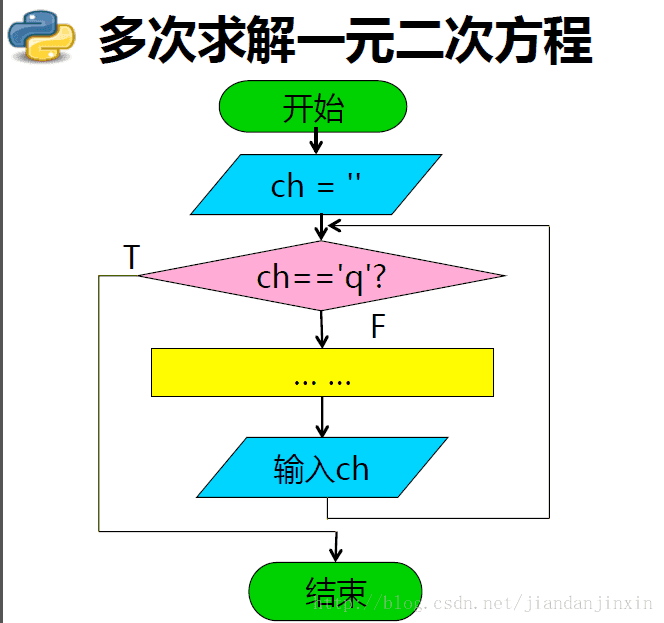
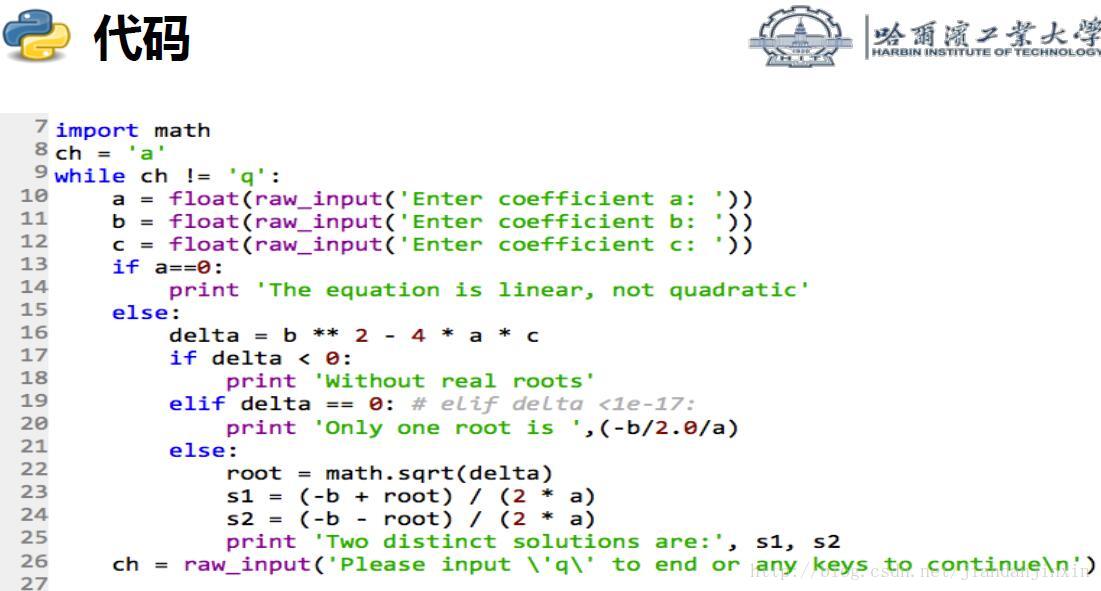
break continue 语句
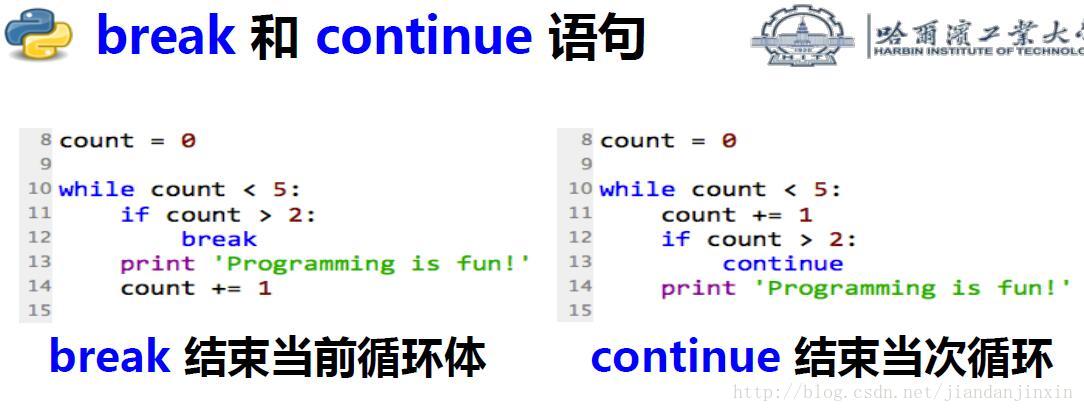
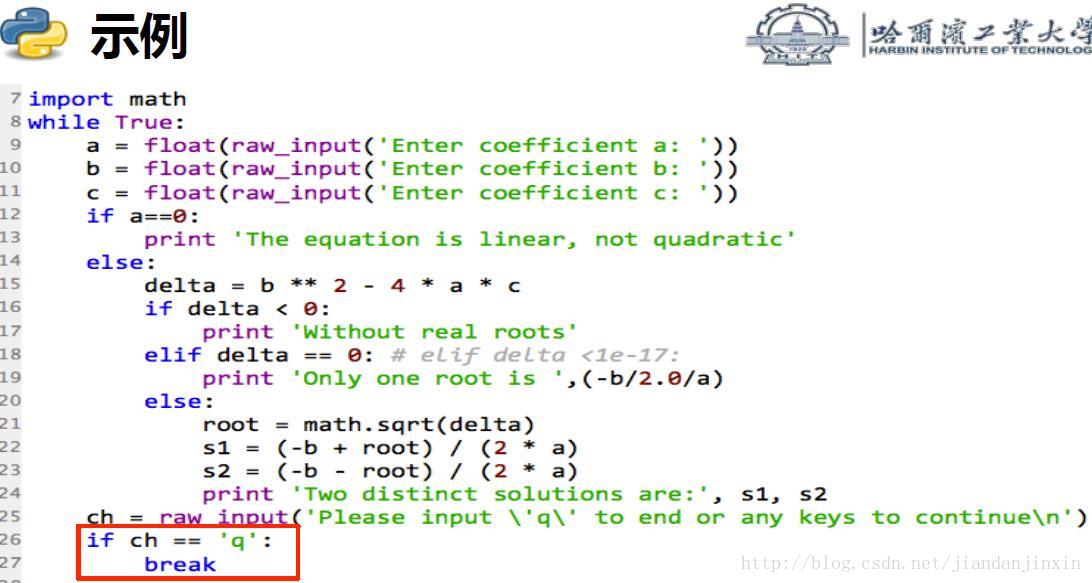
for循环结构
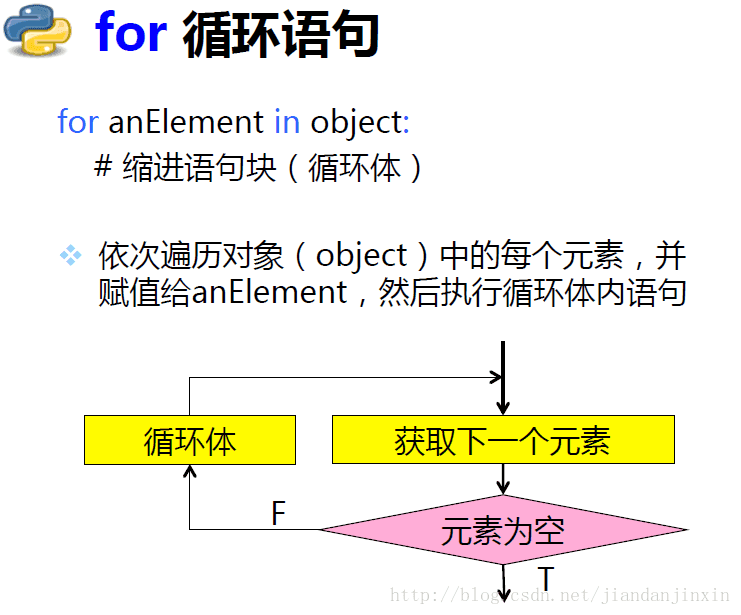

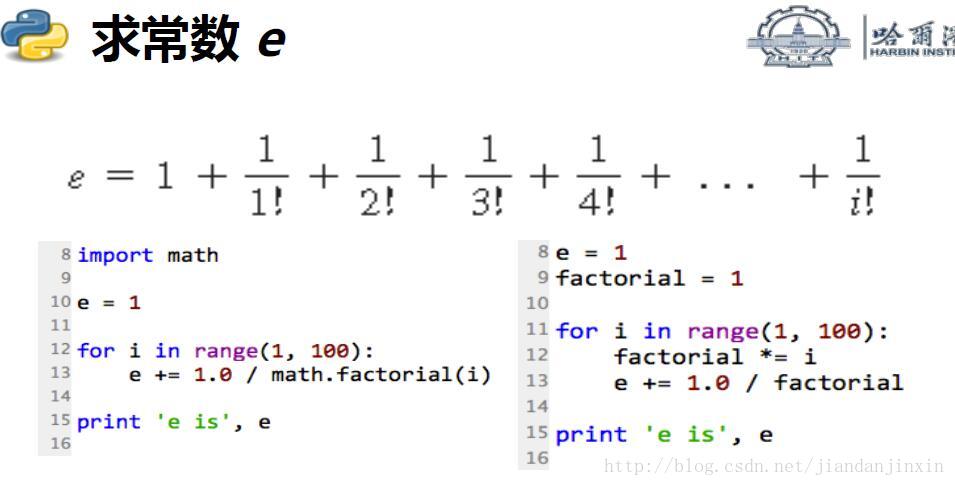
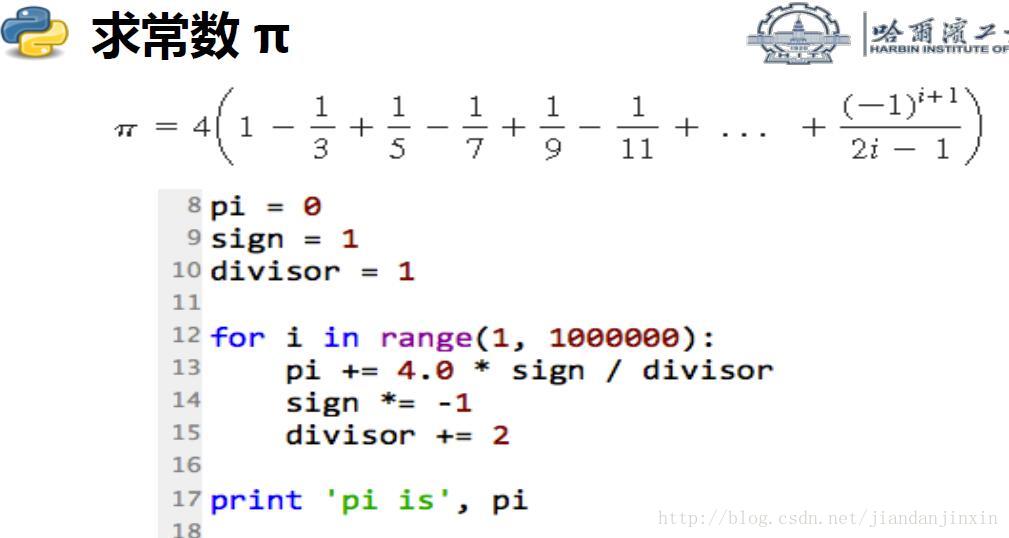
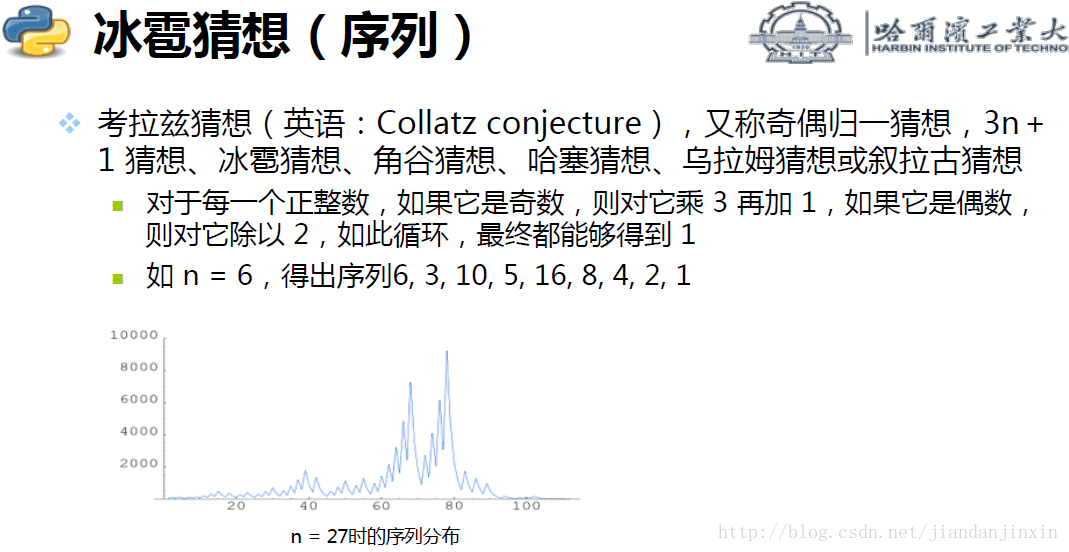
for n in range(1, 100):
while n !=1:
if n%2 == 0:
n /=2
else:
n = 3*n +1
print n,
print n, 表示是打印在同一行中。
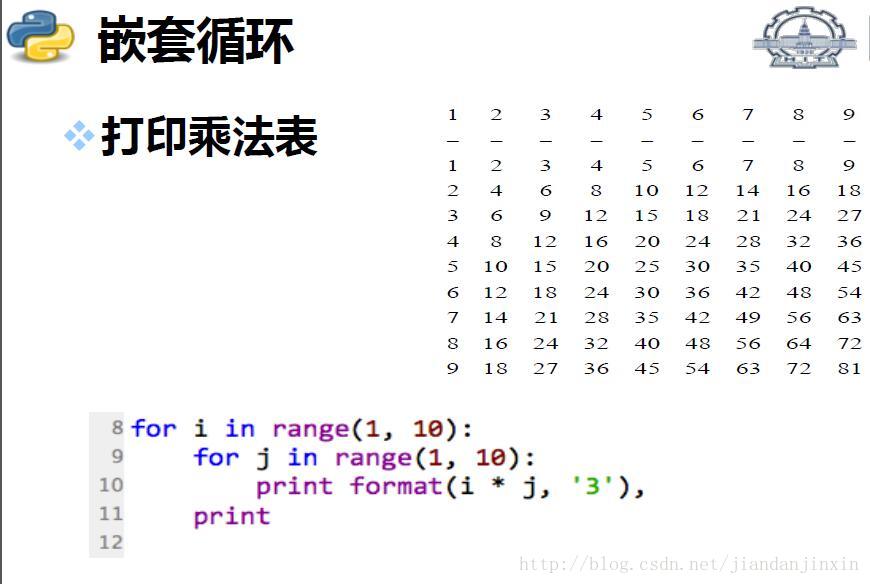
print format 右对齐

While VS for 循环
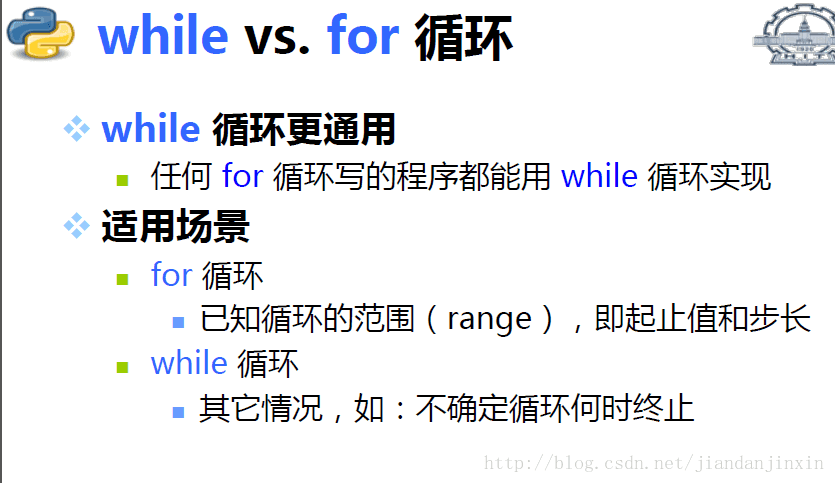
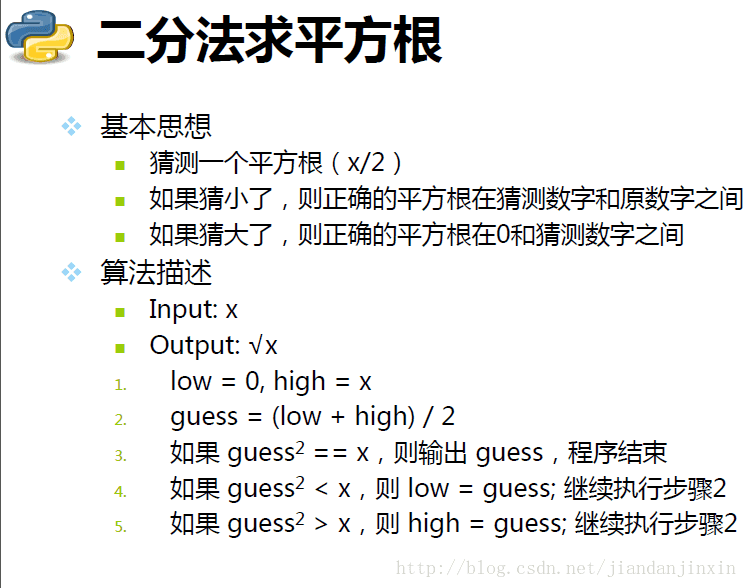

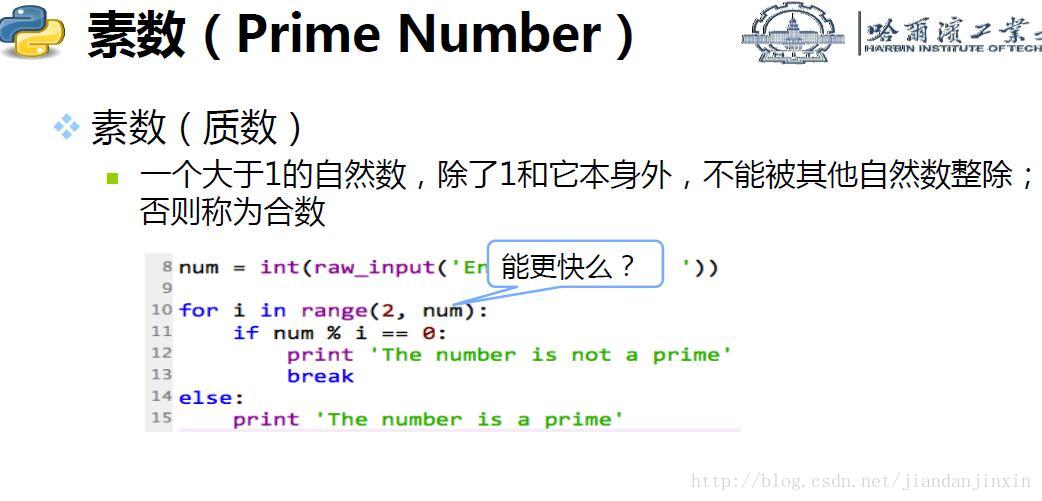

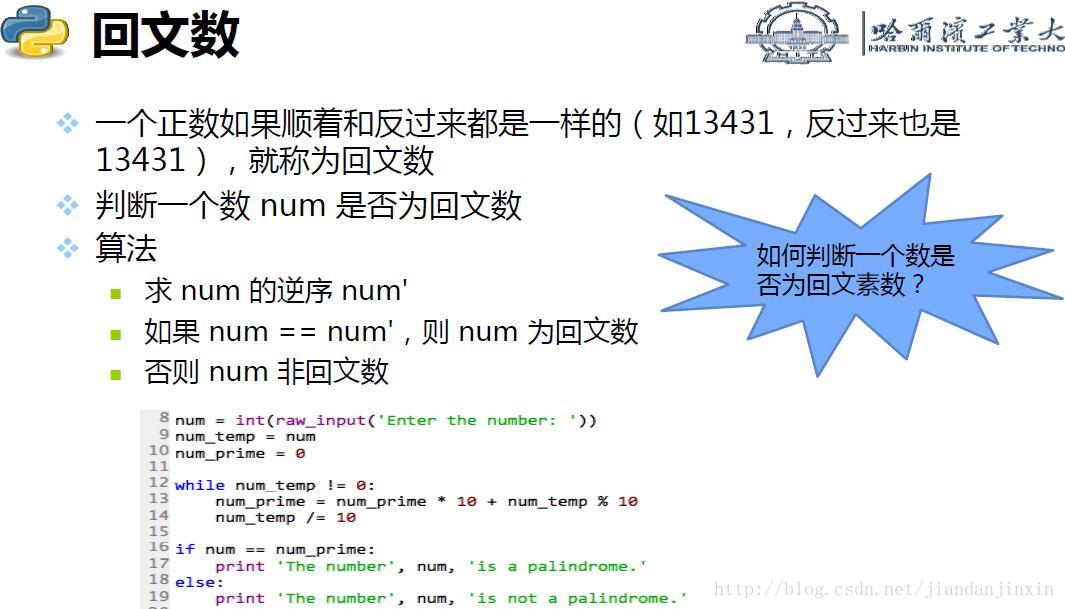
函数

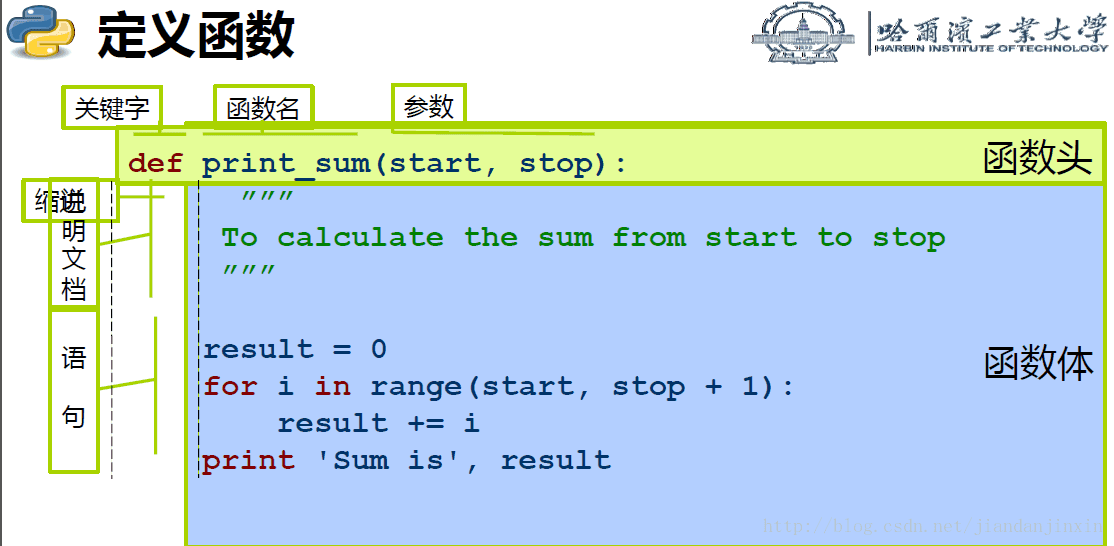
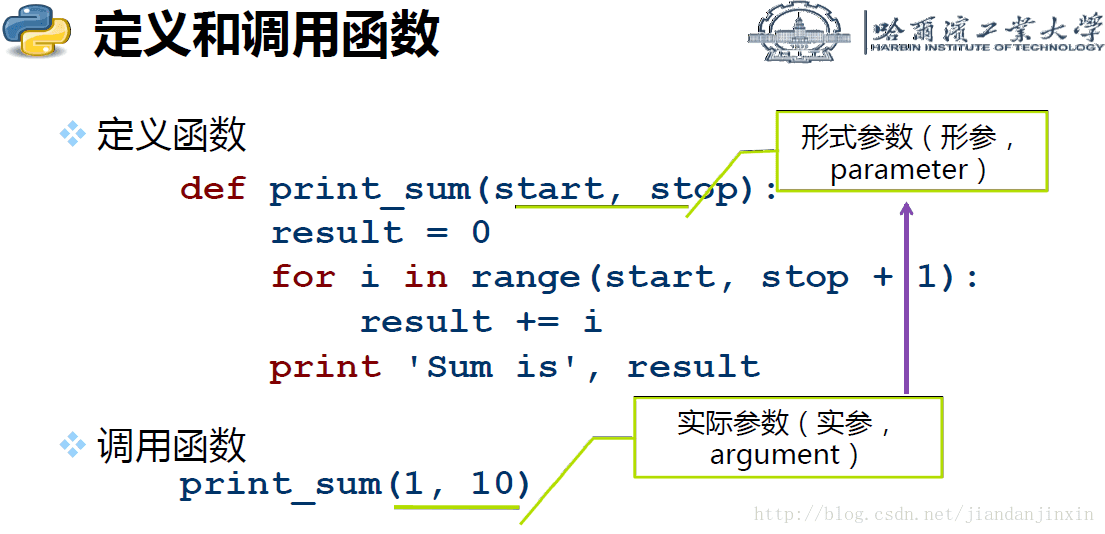
缺省参数
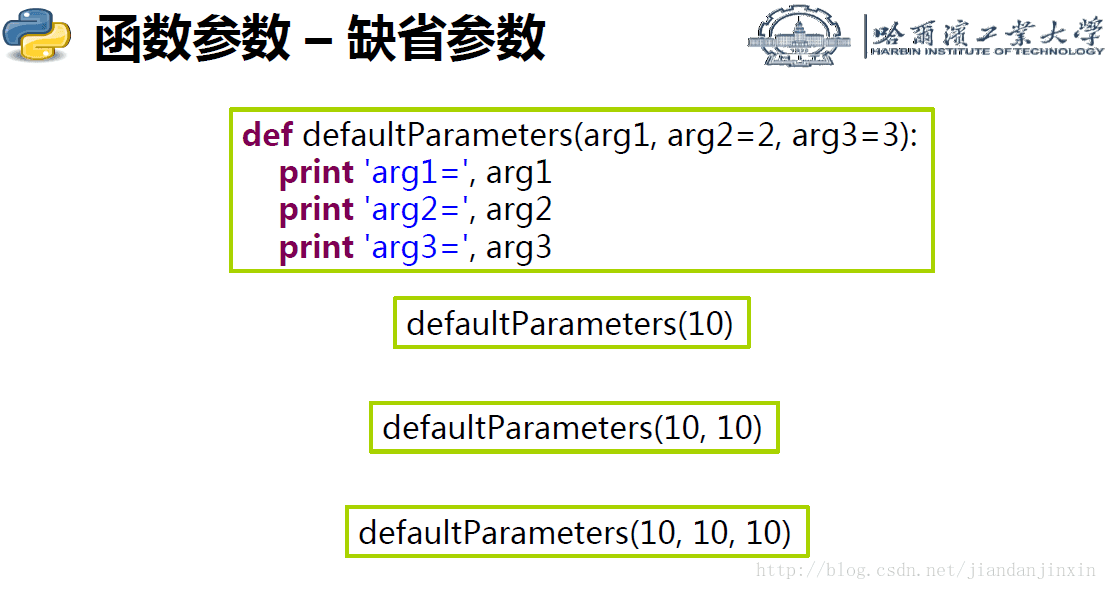
有返回值函数
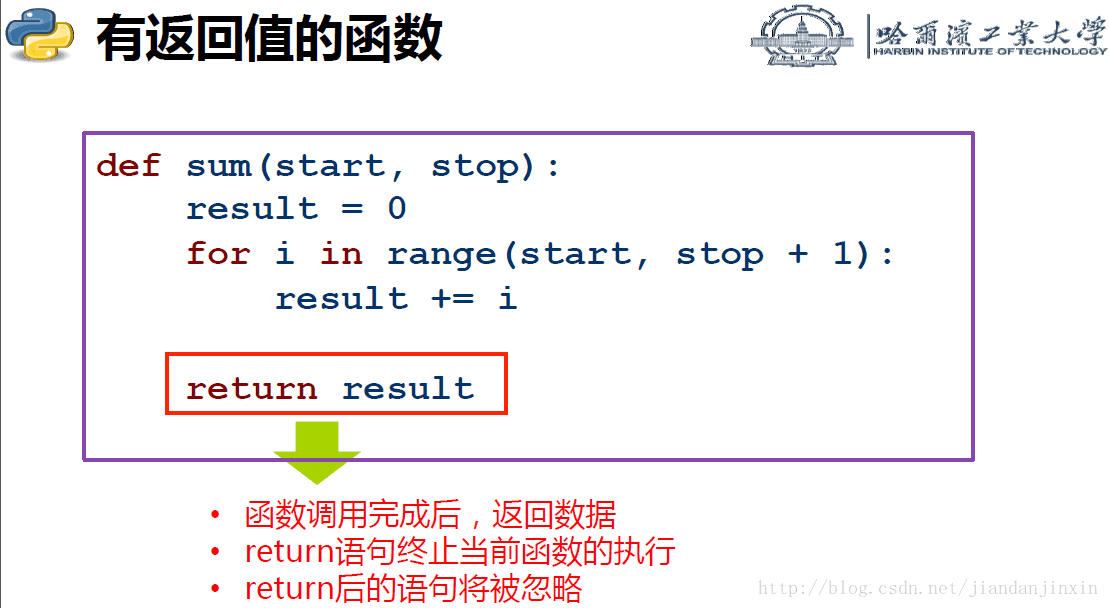
局部变量和全局变量 global
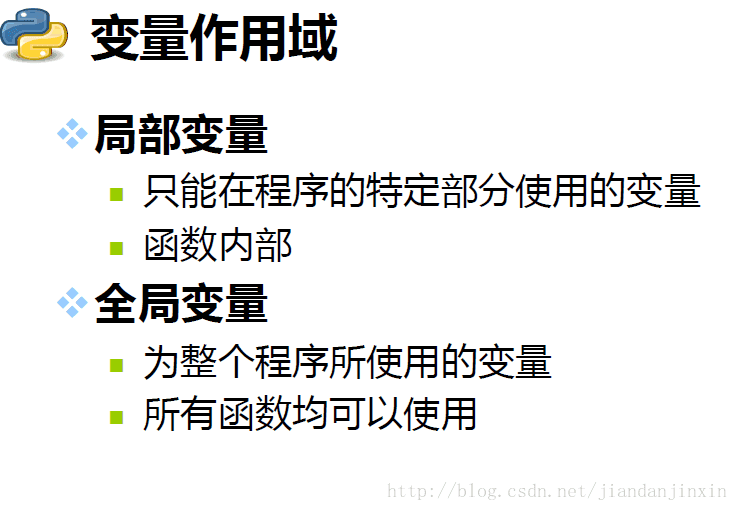


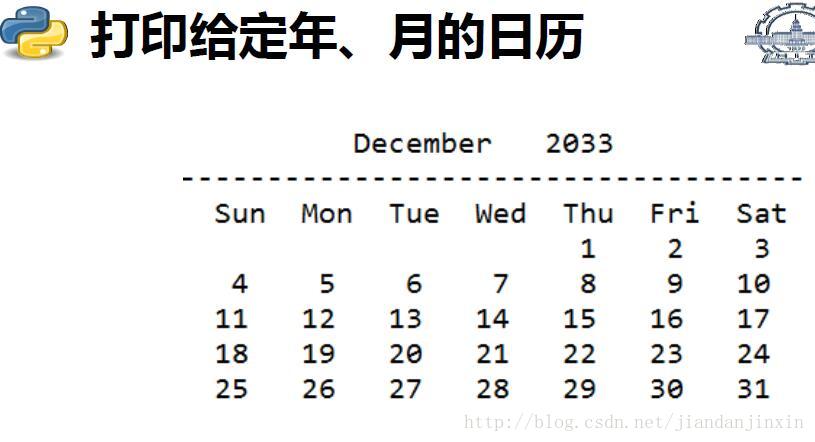
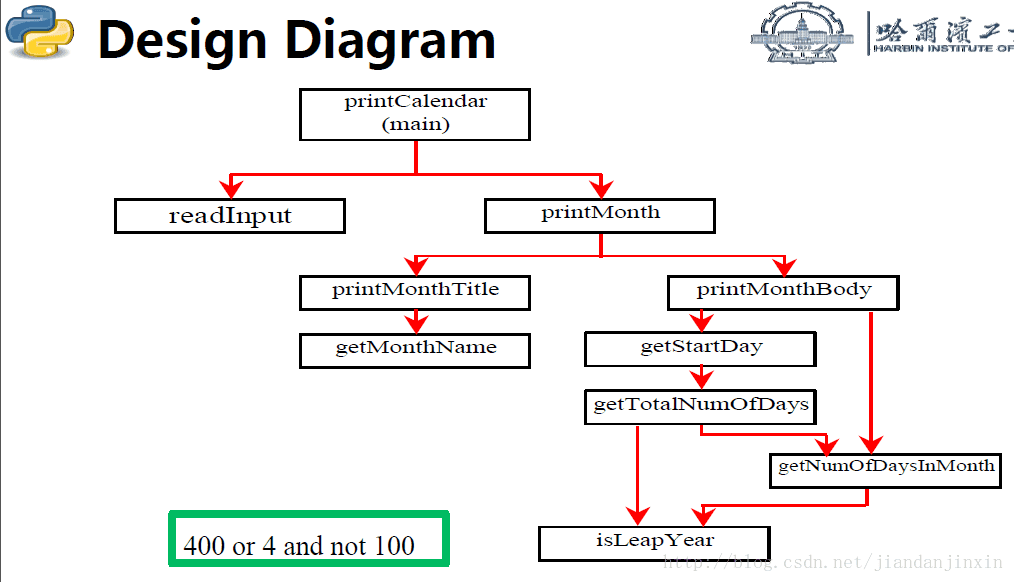
def is_leap_year(year):
if year %4 ==0 and year %100 !=0 or year % 400 ==0:
return True
else:
return Falsedef get_num_of_days_in_month(year, month):
if month in (1, 3, 5, 7, 8, 10, 12):
return 31
elif month in (4, 6, 9, 11):
return 30
elif is_leap_year(year):
return 29
else:
return 28def get_total_num_of_day(year, month):
days = 0
for y in range(1800, year):
days +=366
else:
days +=365for m in range(1, month):
days += get_num_of_days_in_month(year, m)
return daysdef get_start_day(year, month):
return 3+ get_total_num_of_days(year, month) %7print get_start_day(2033, 12)
递归函数
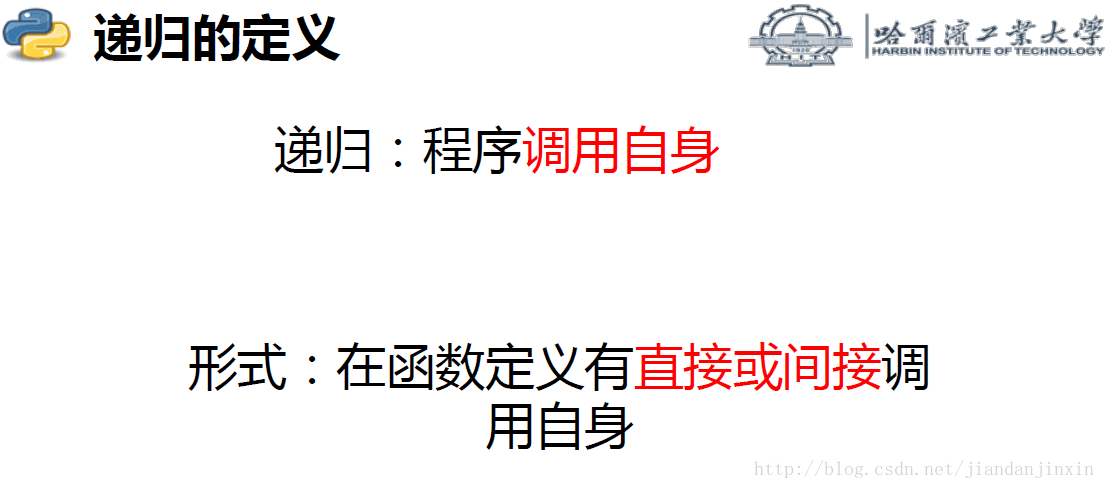
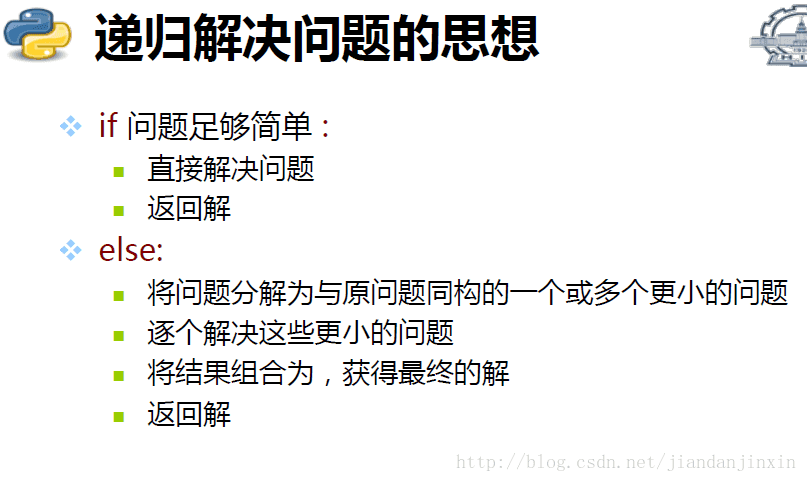
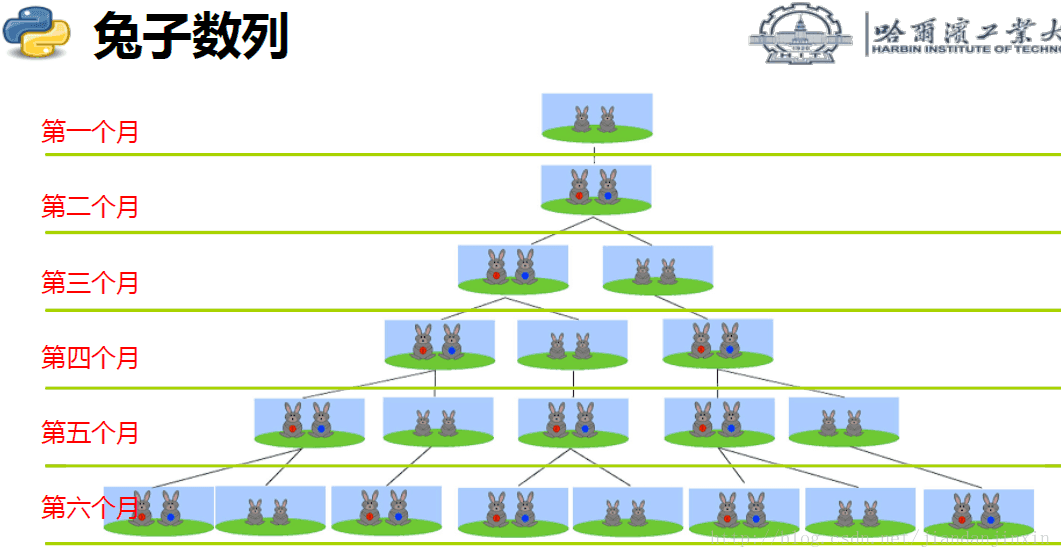
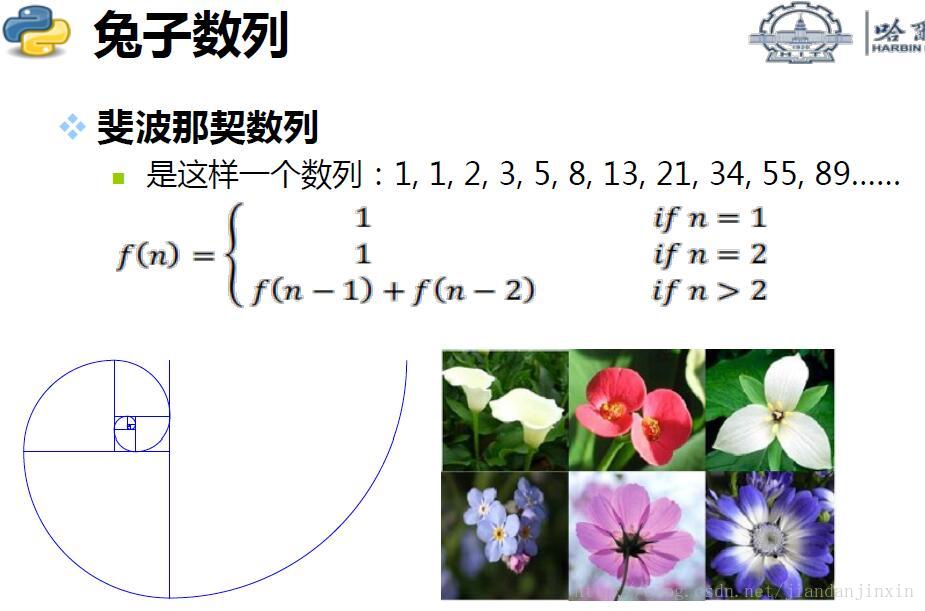
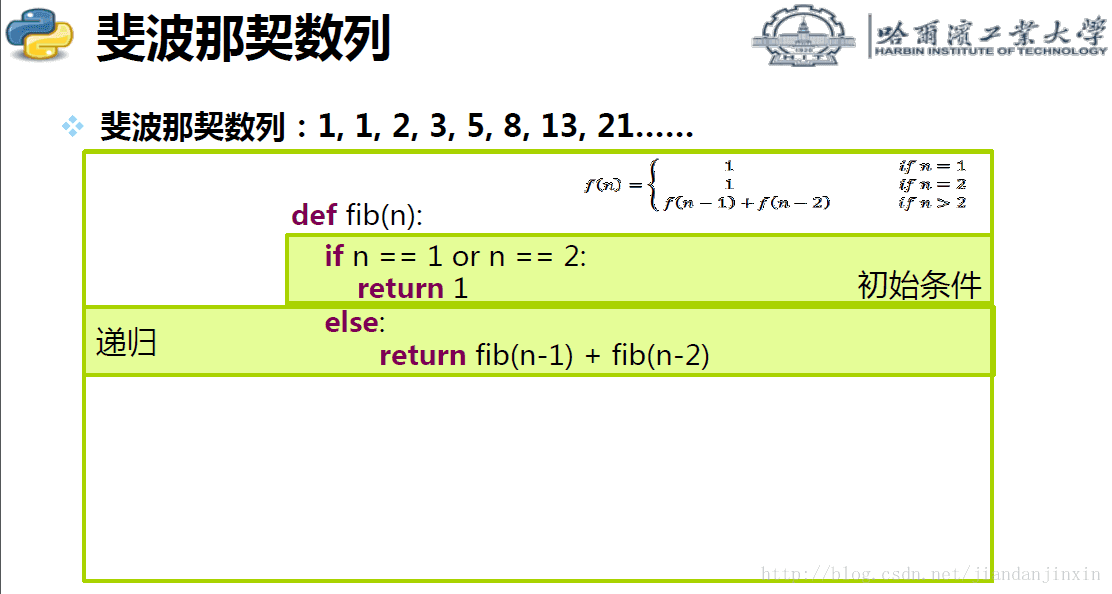
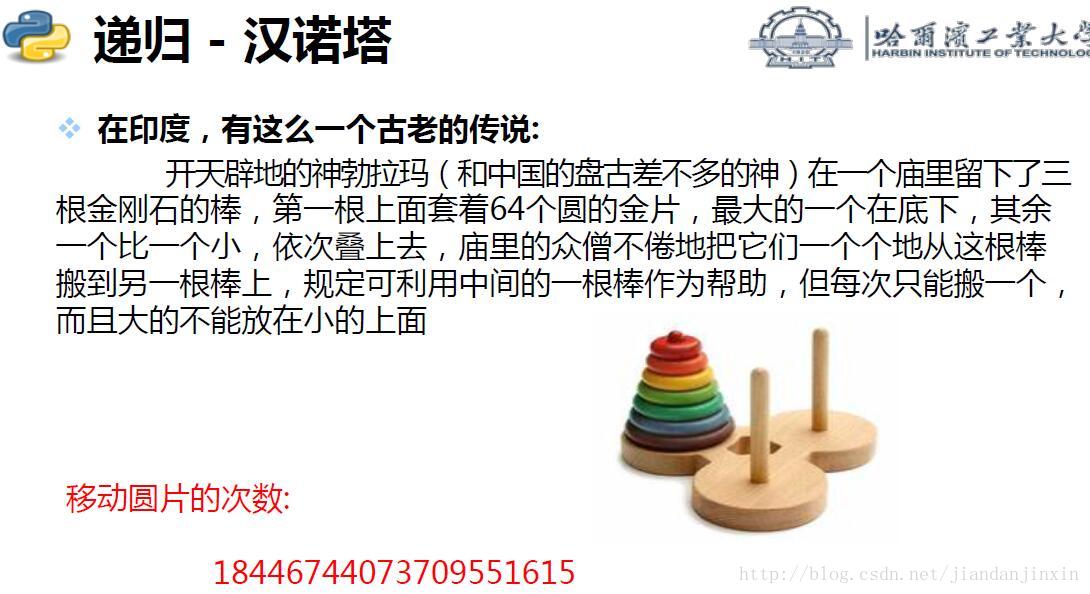
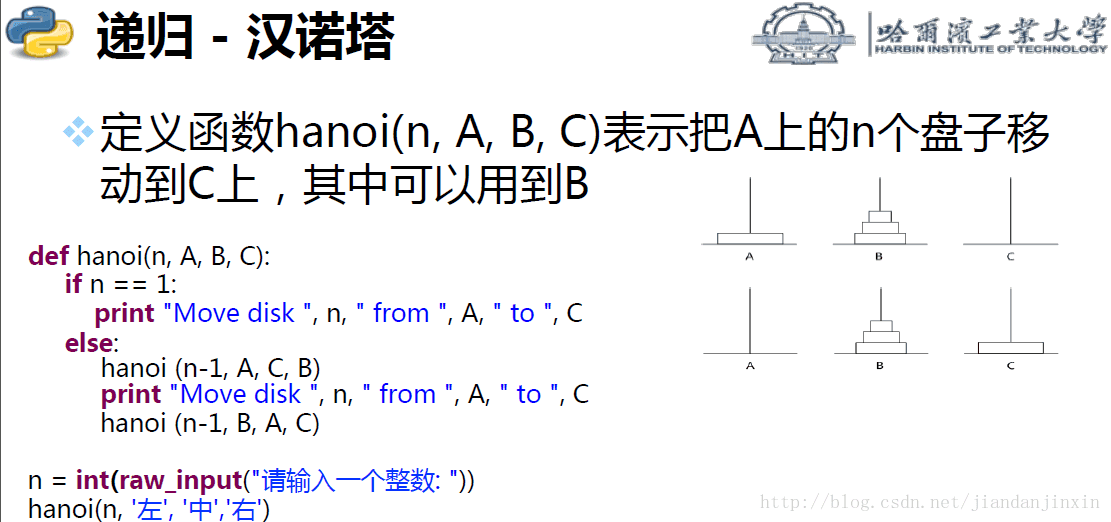
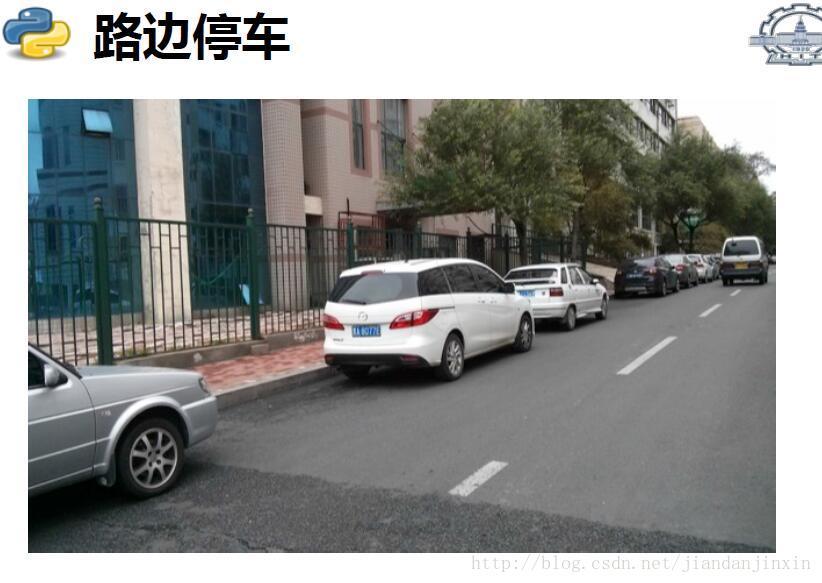
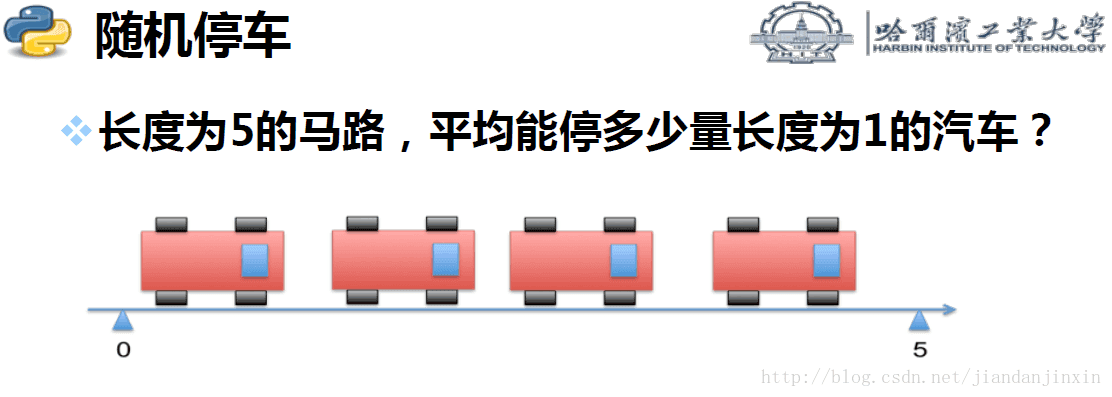
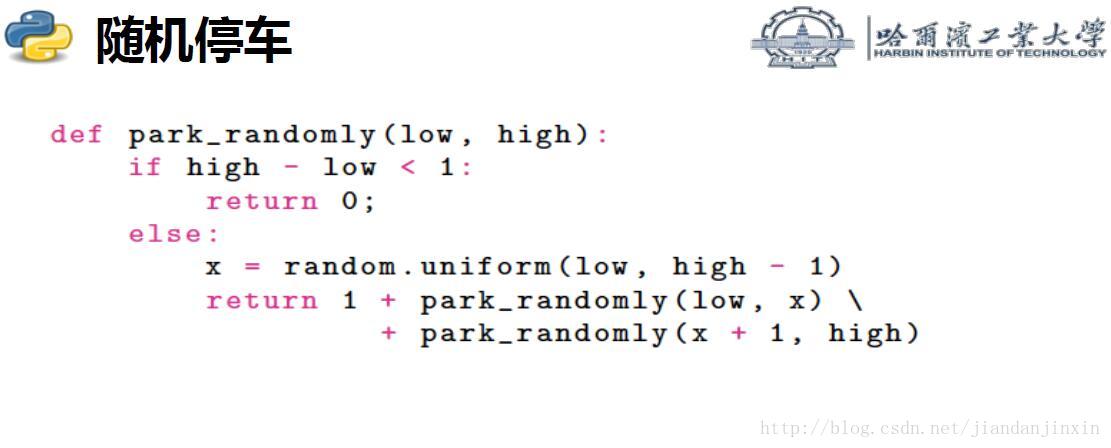
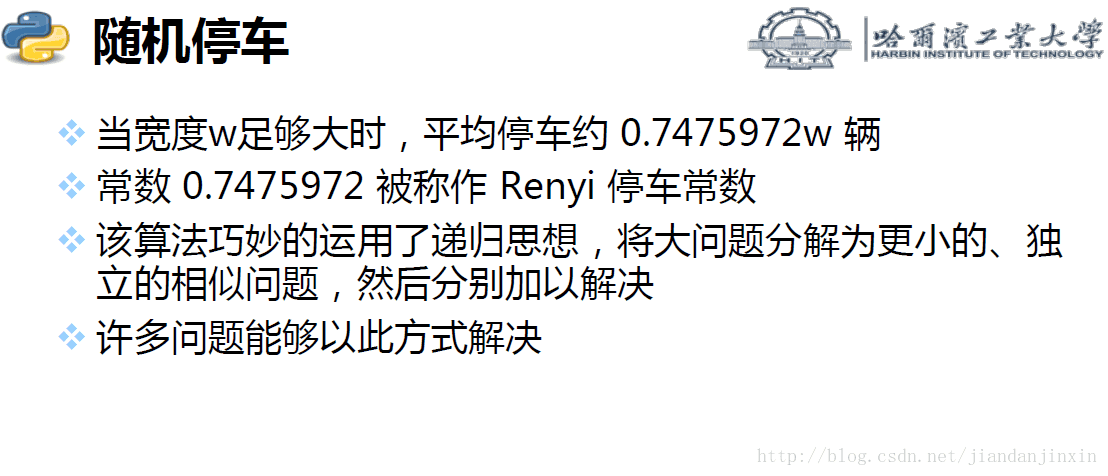
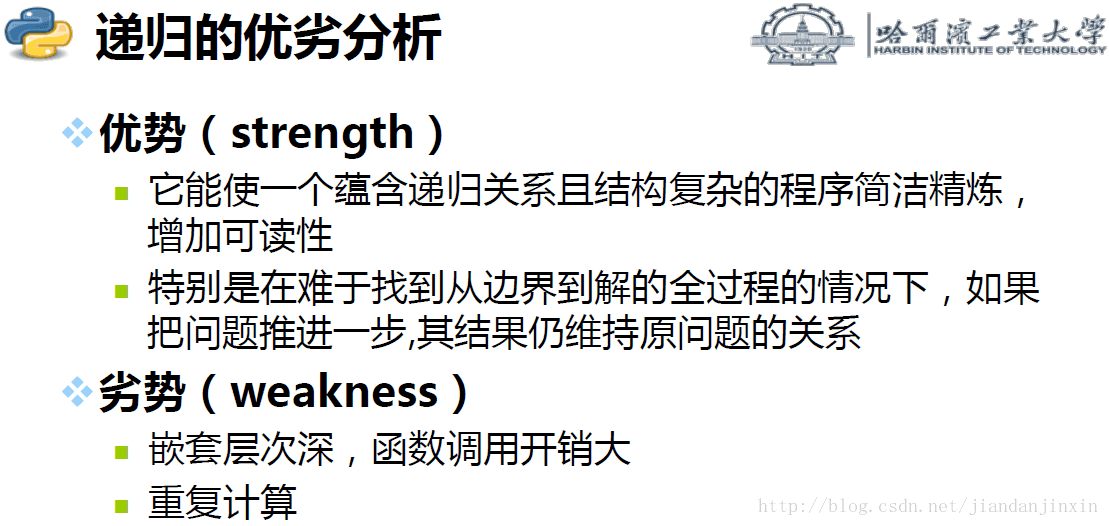
字符串
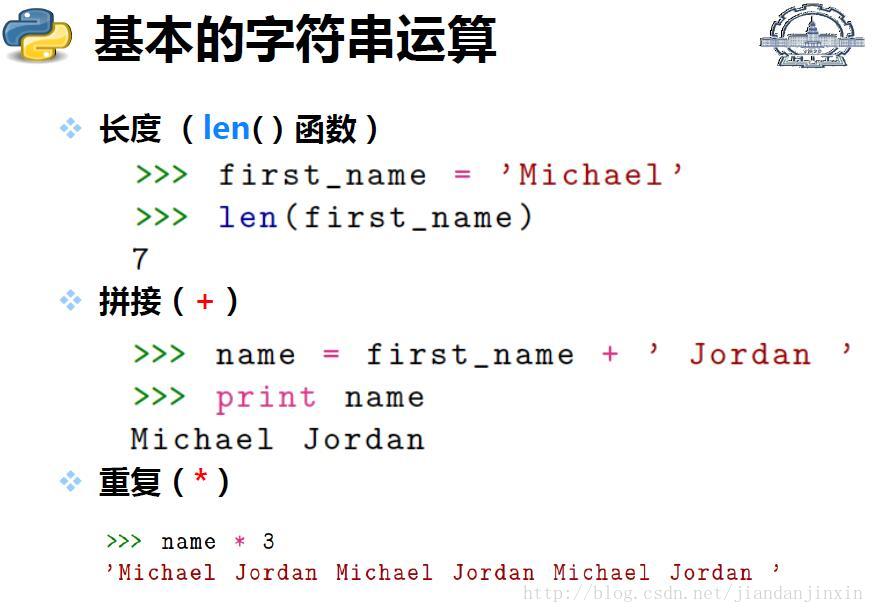



字符串是不可变的

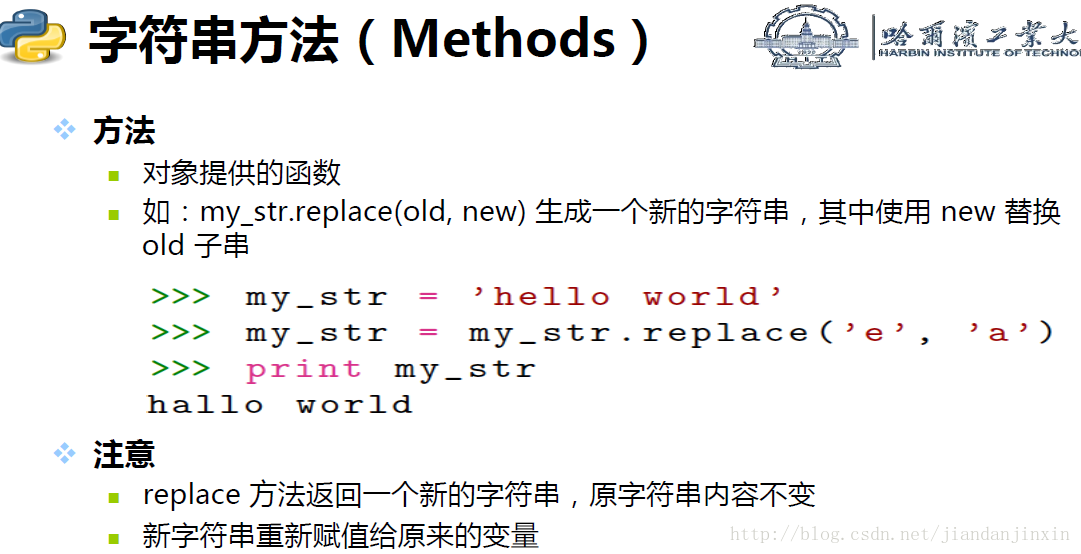
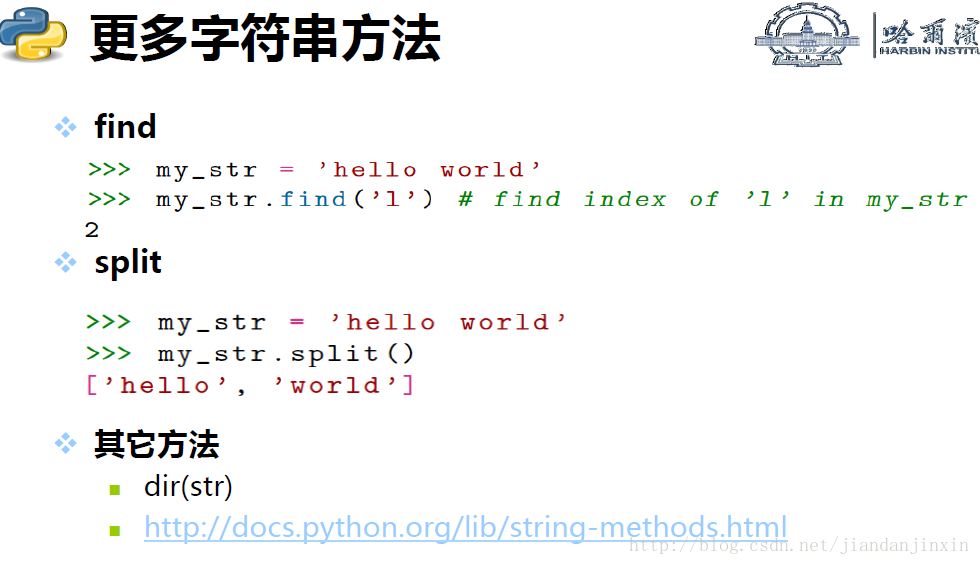
示例: 人名游戏
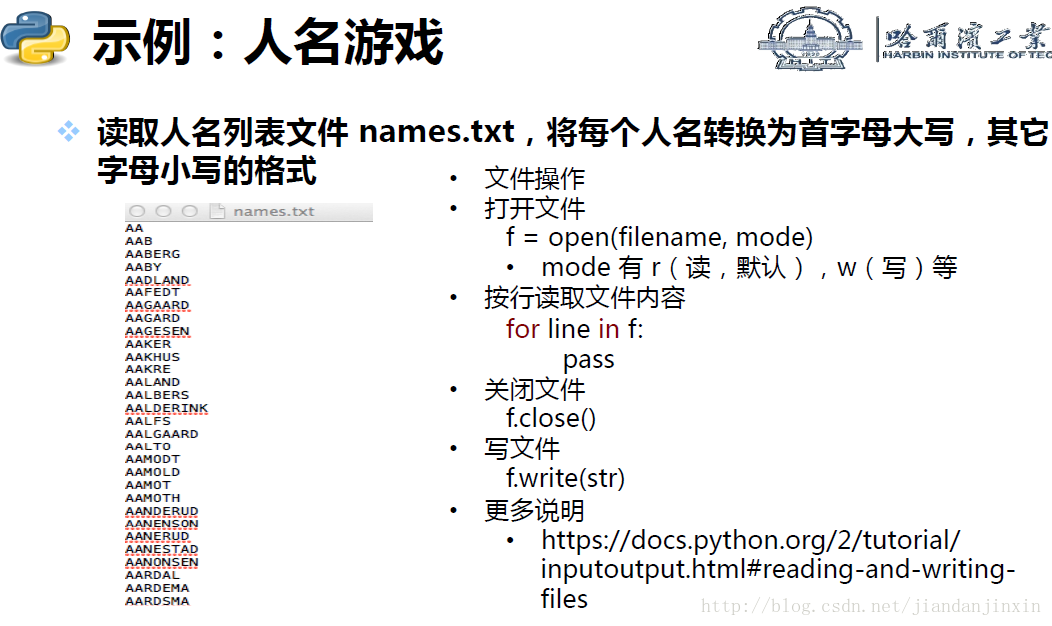
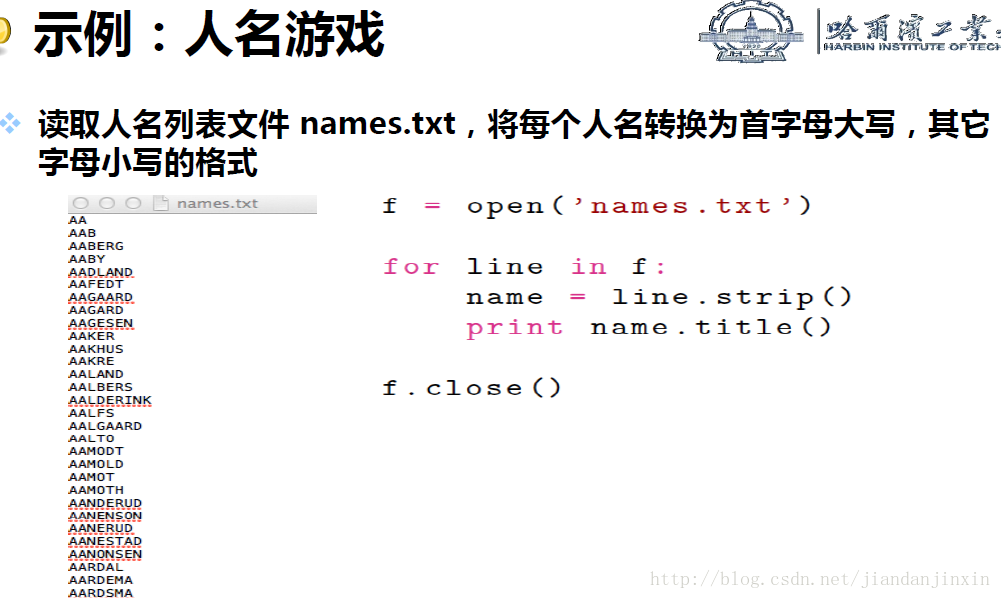
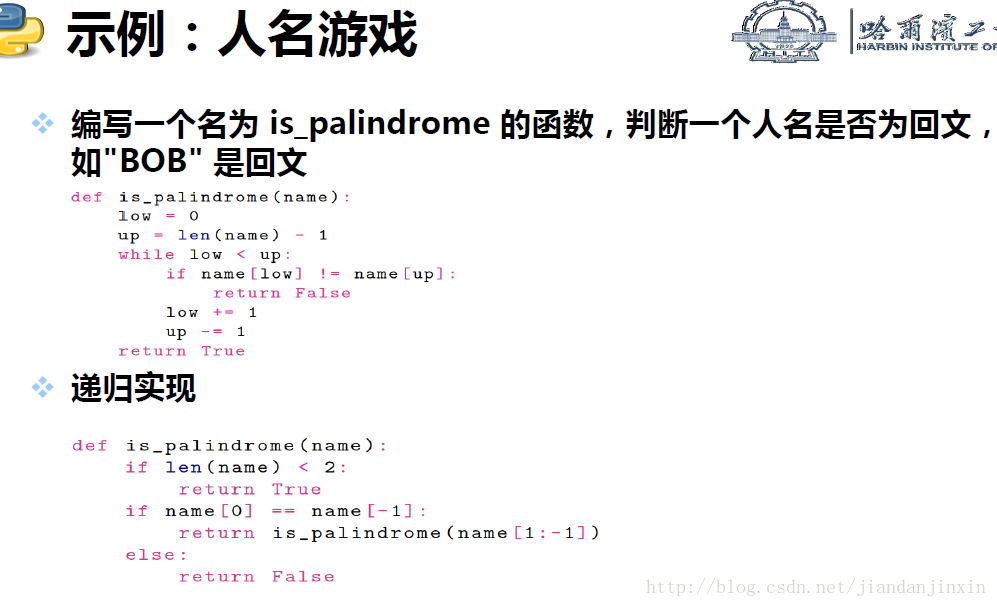
字符串比较
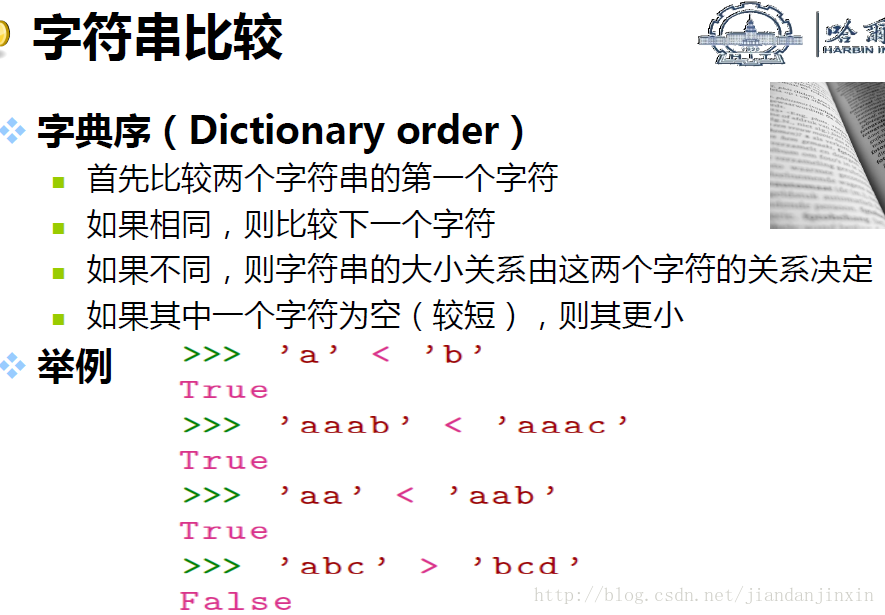

字符串格式化

正则表达式
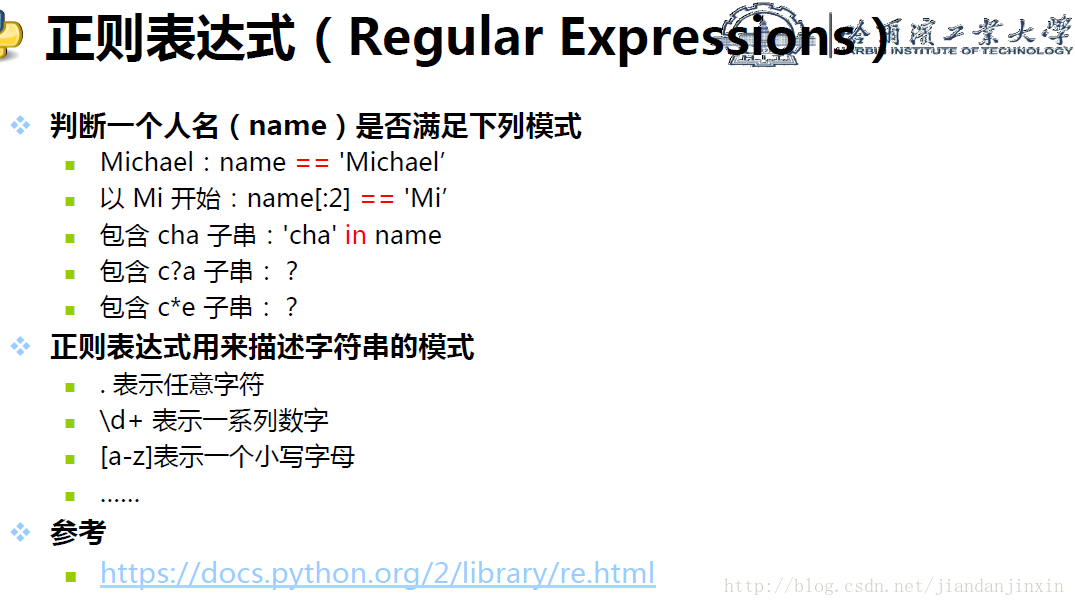
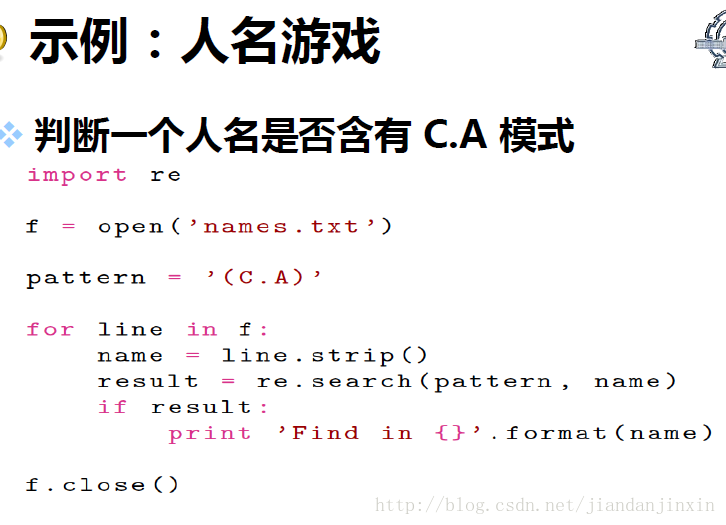
列表
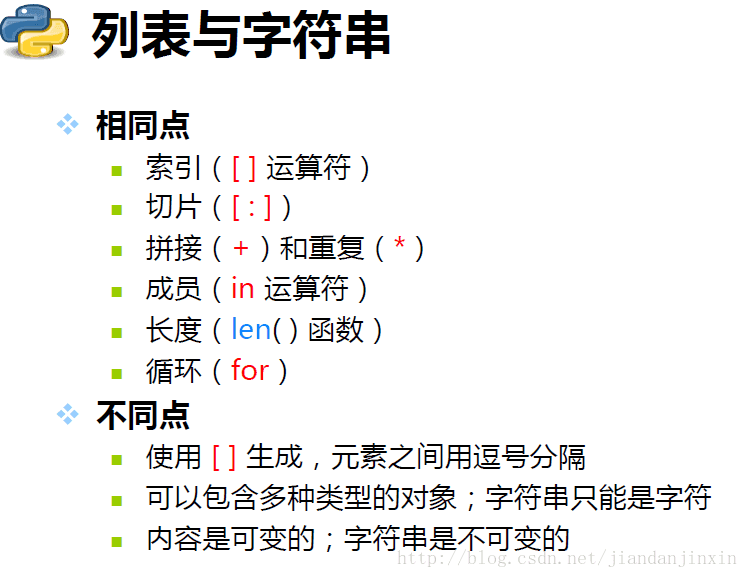
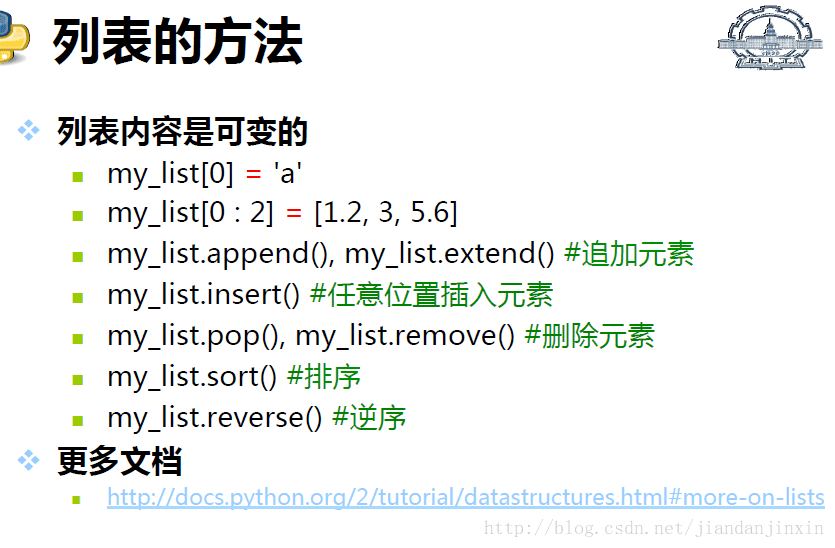
my_list[2:]#取从2到最后的值。
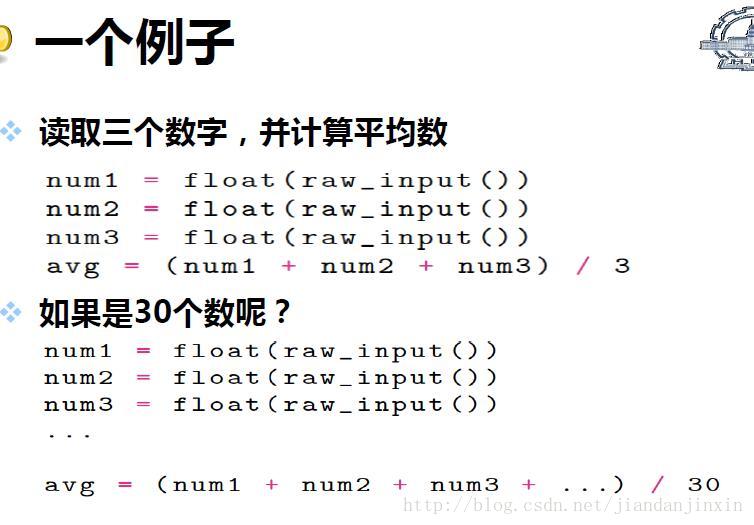
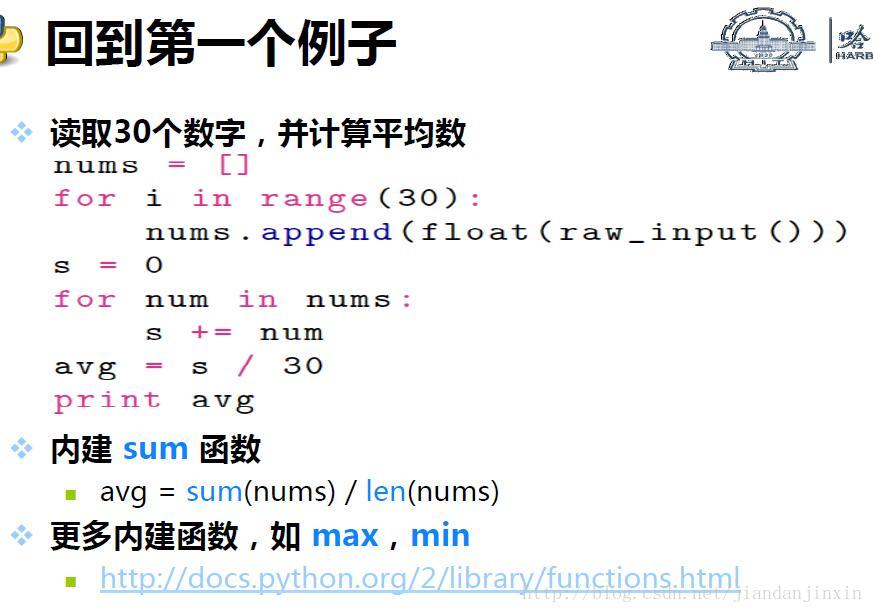
列表赋值
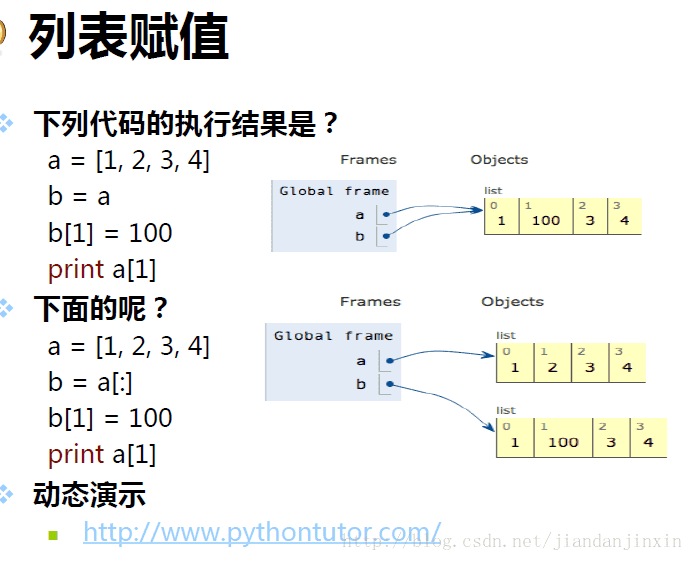
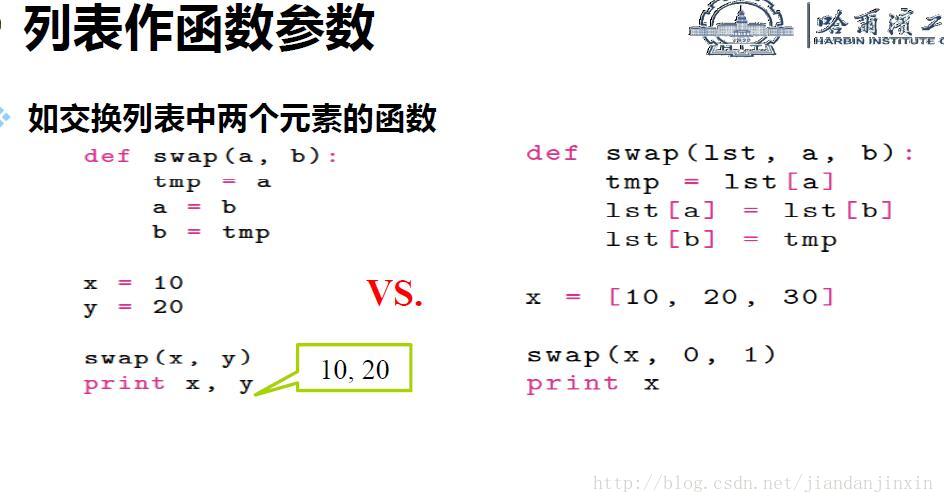
python中list与array互相转换
u = array([[1,2],[3,4]])
m = u.tolist() #转换为list
m.remove(m[0]) #移除m[0]
m = np.array(m) #转换为array
查找
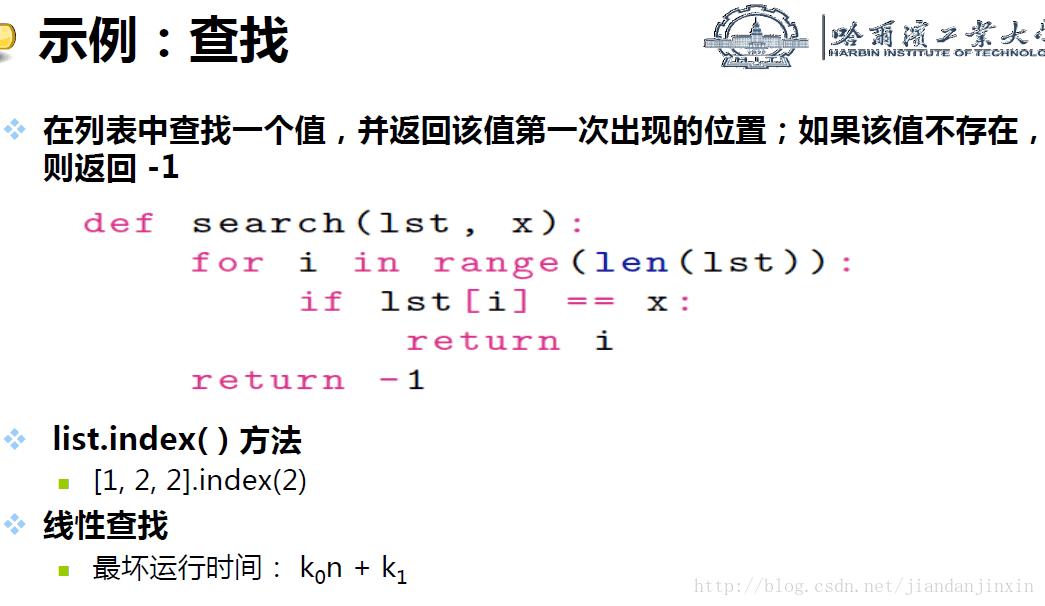
时间复杂度
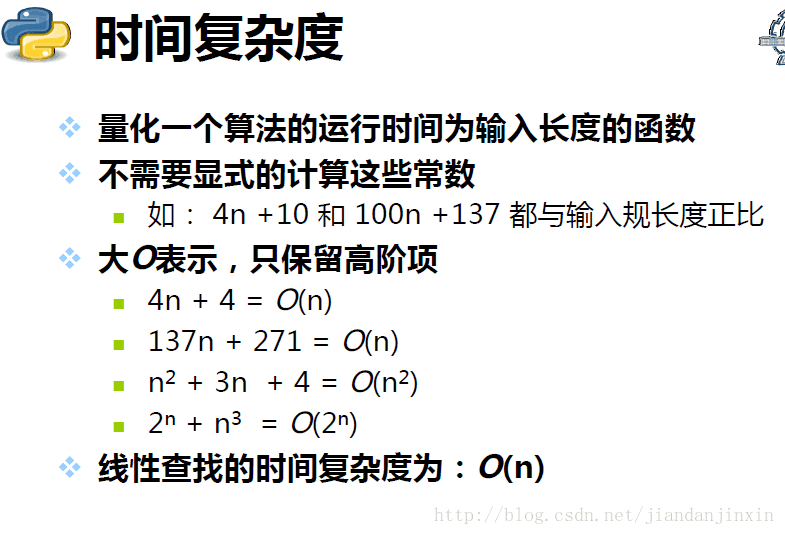
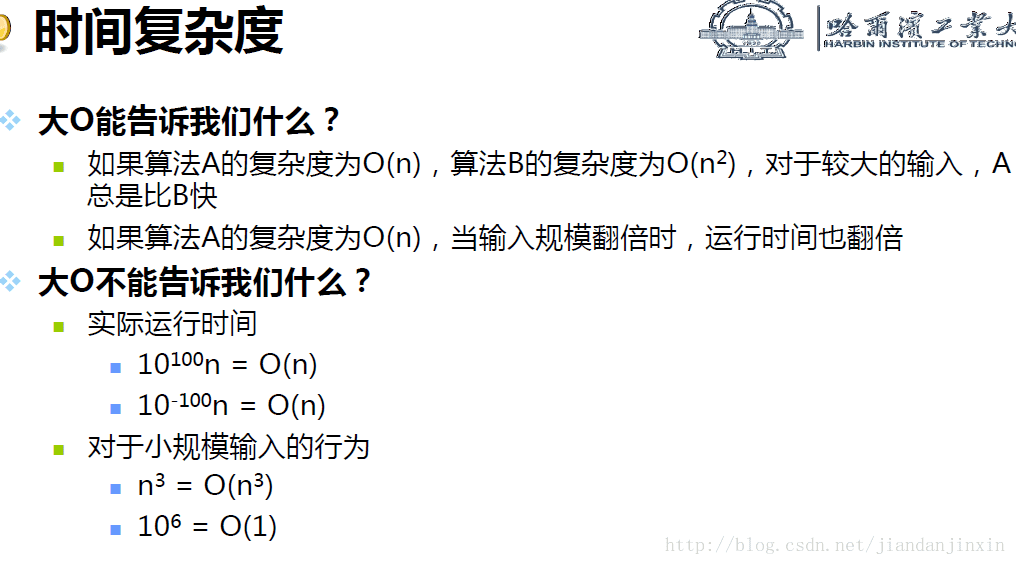
二分法
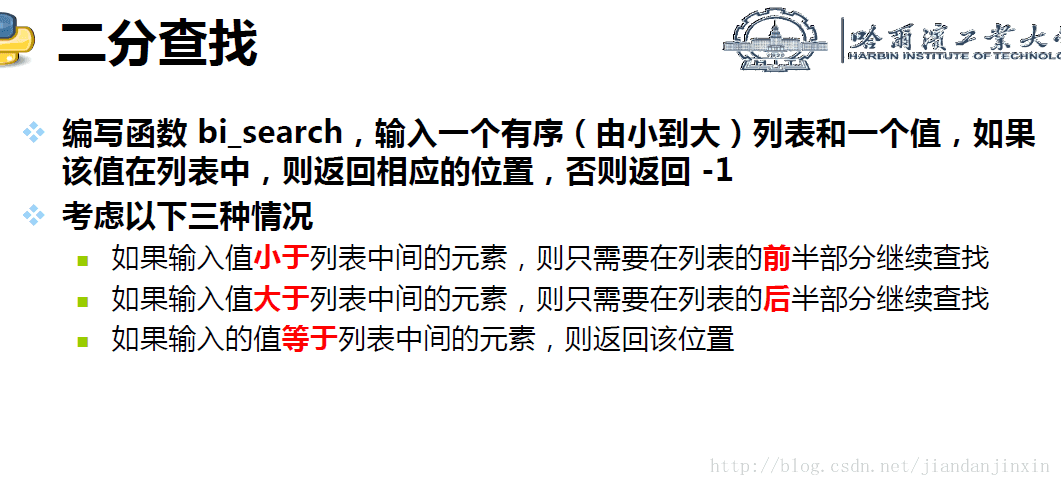
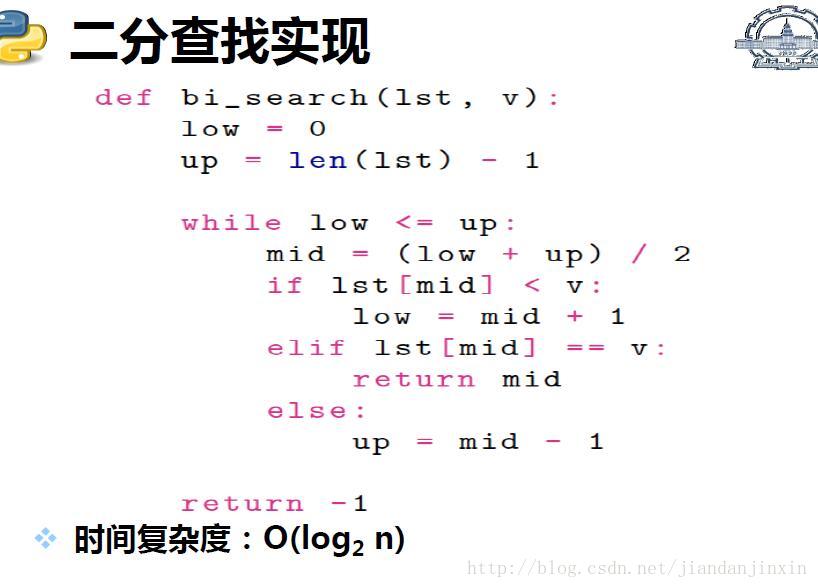
排序
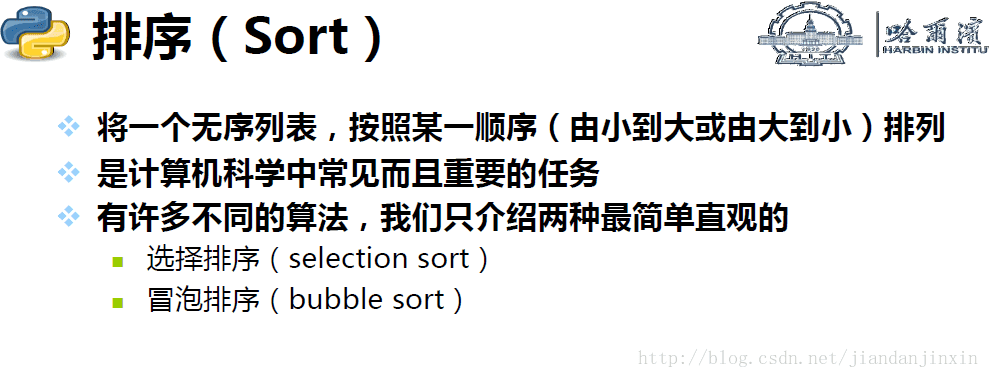
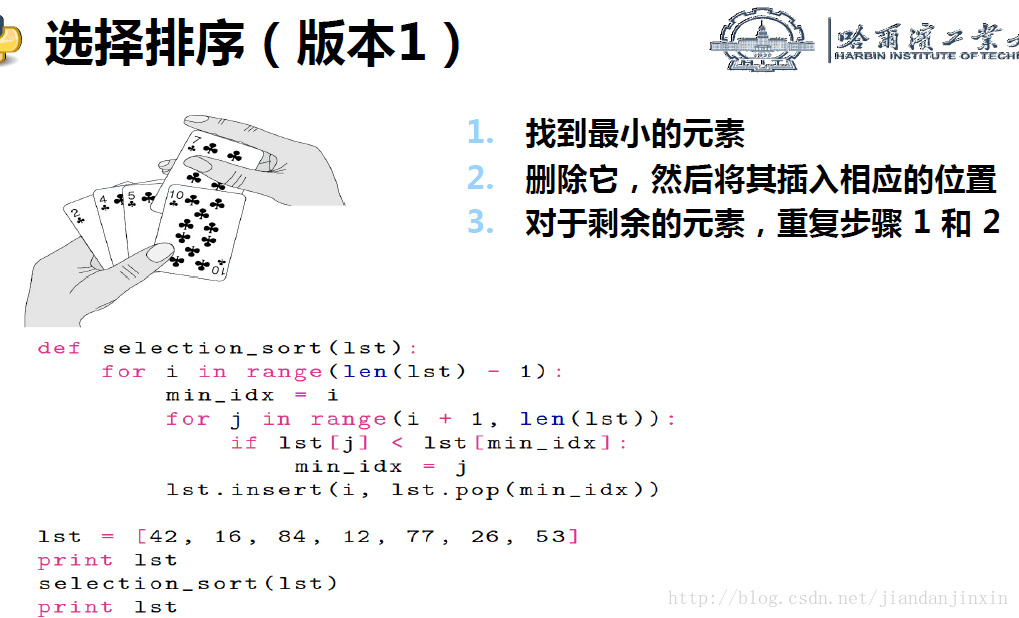
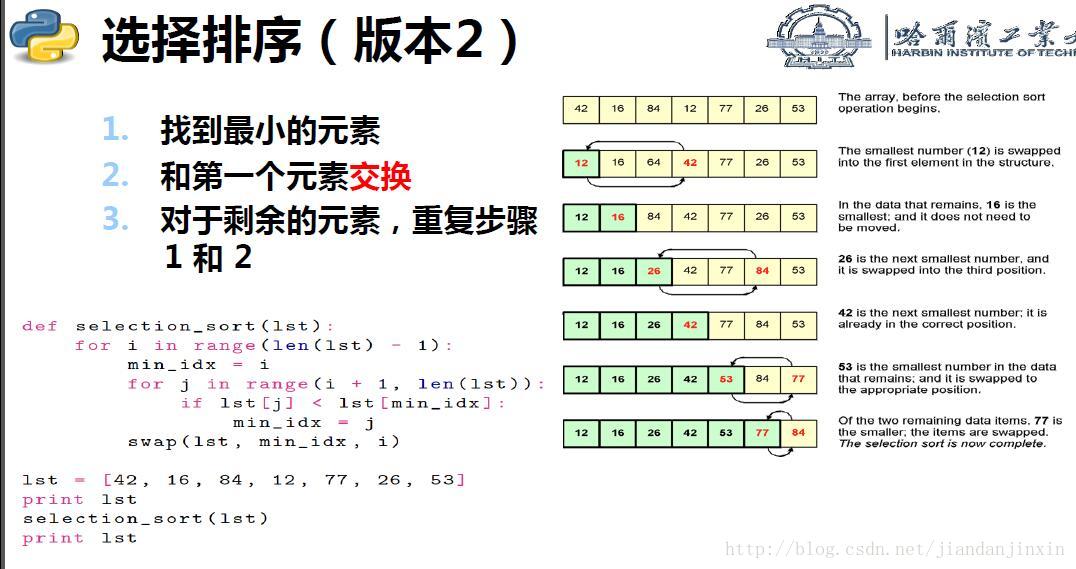
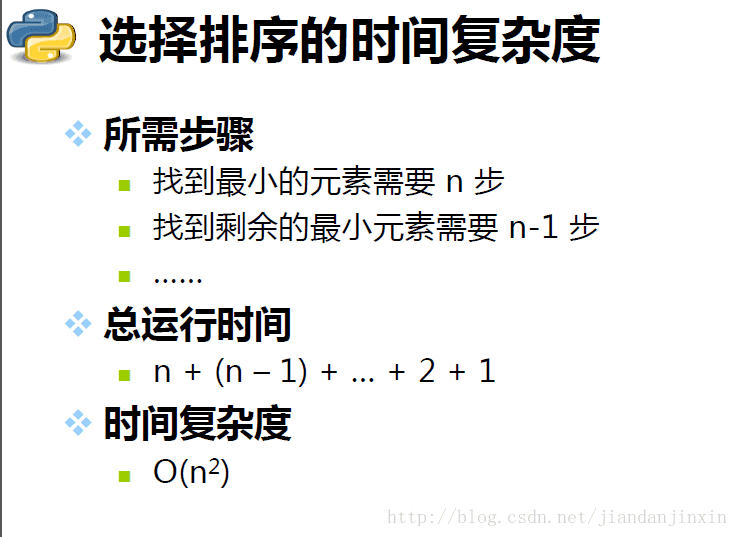
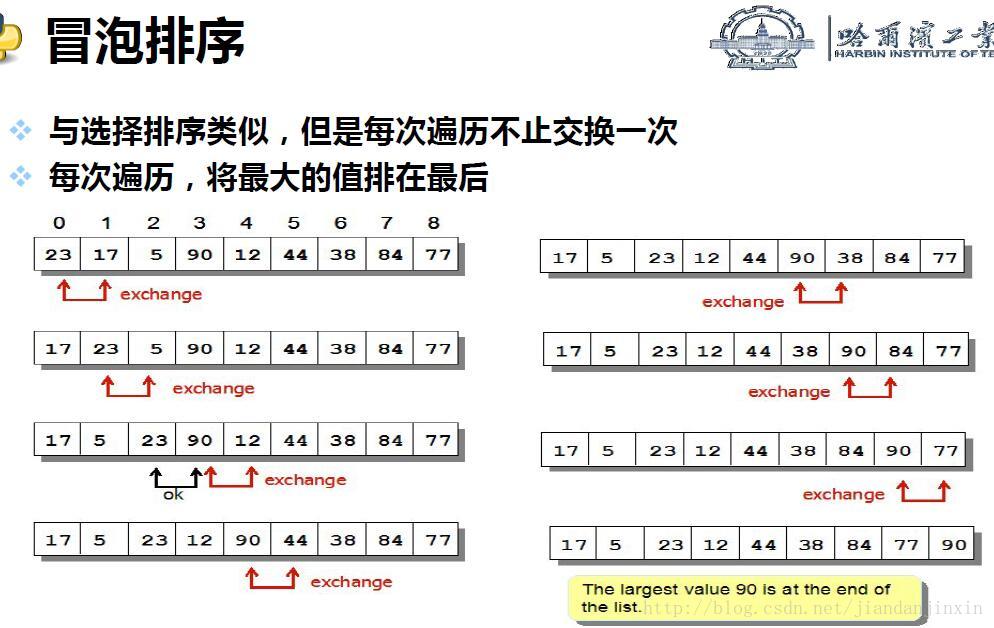
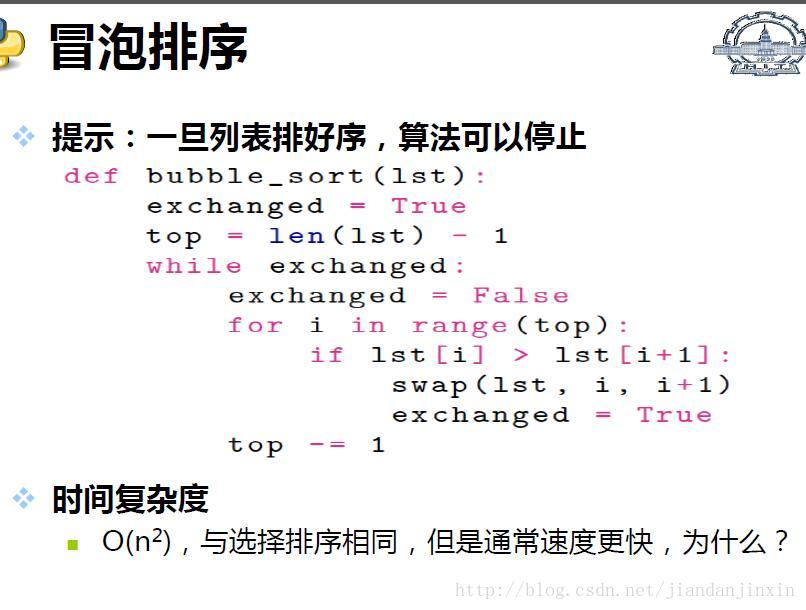
内建排序函数
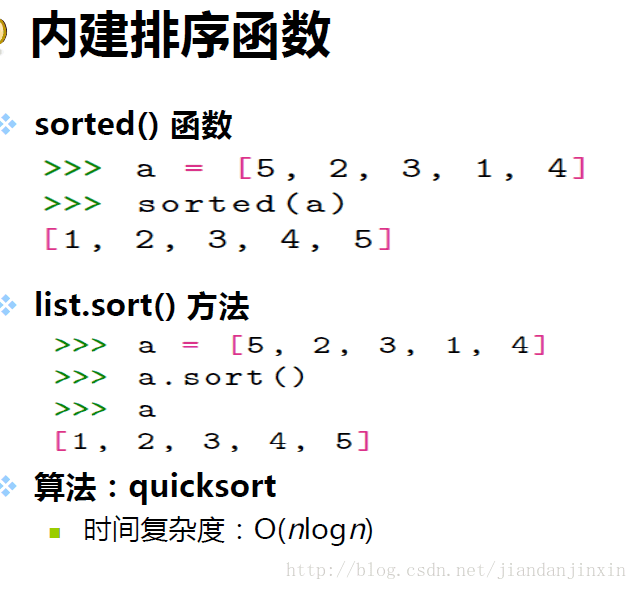
嵌套列表
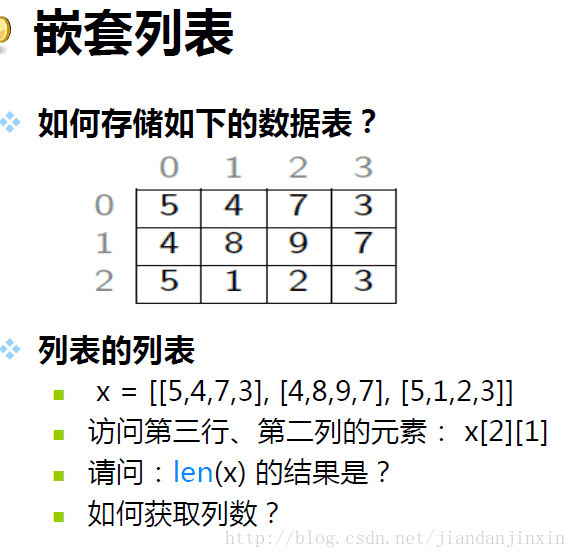

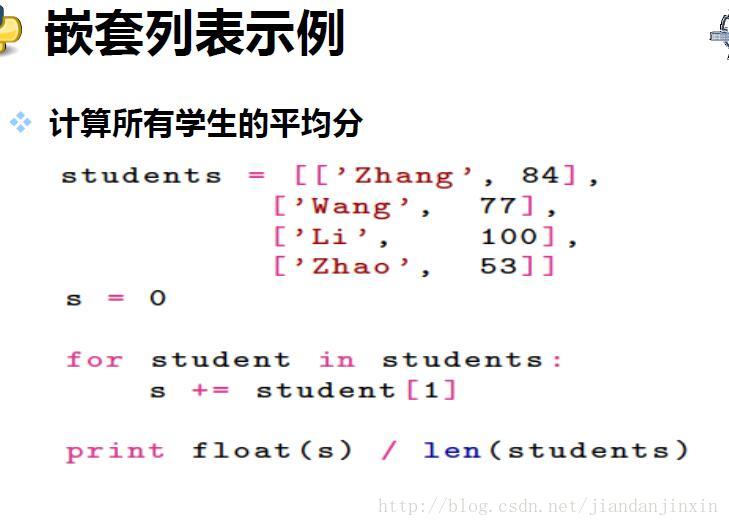
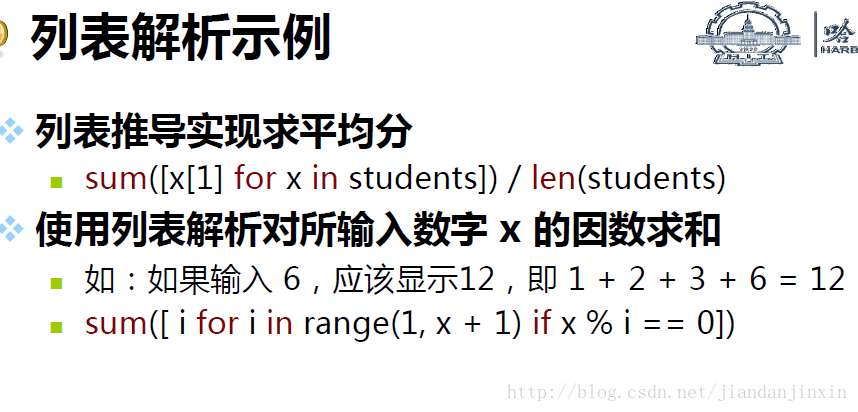
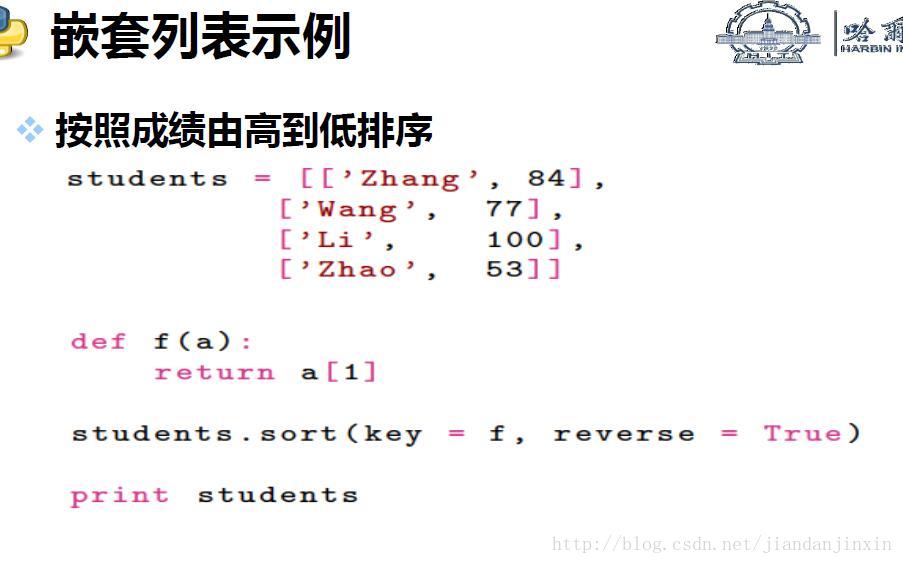
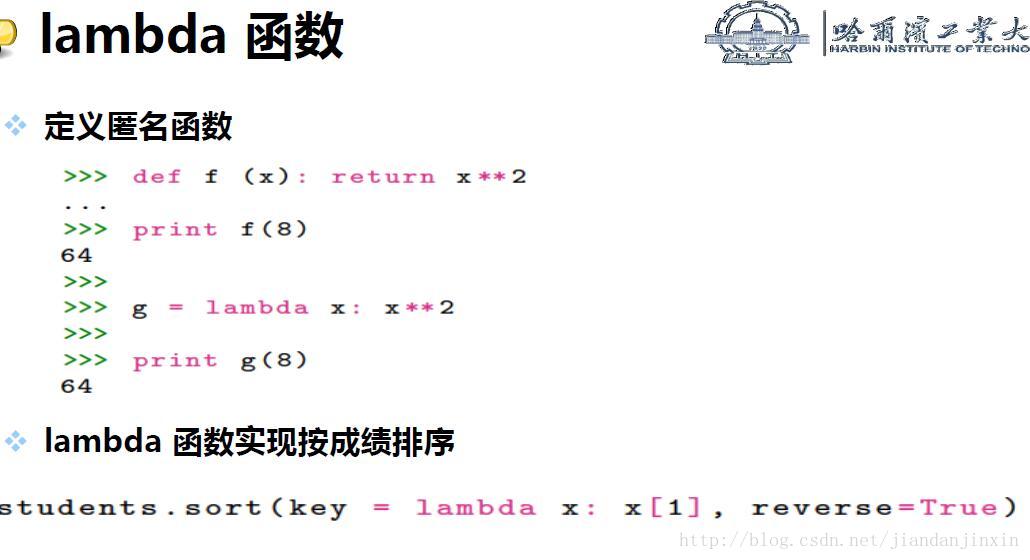
元组
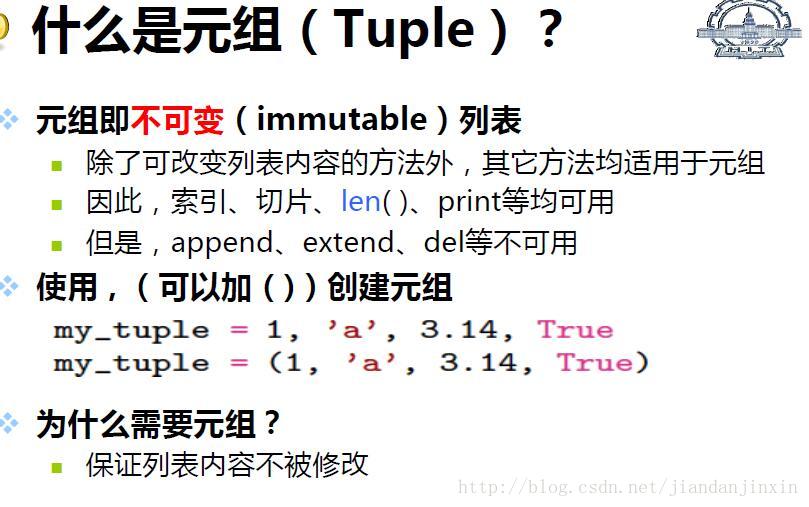
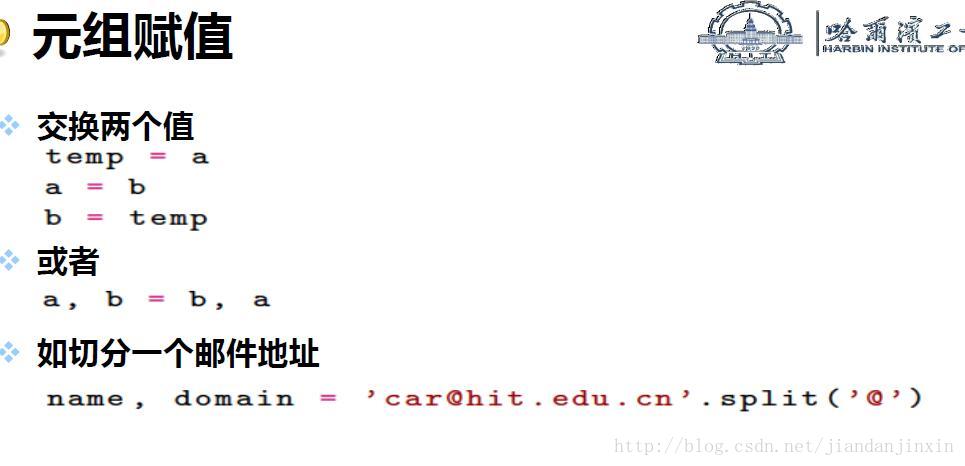
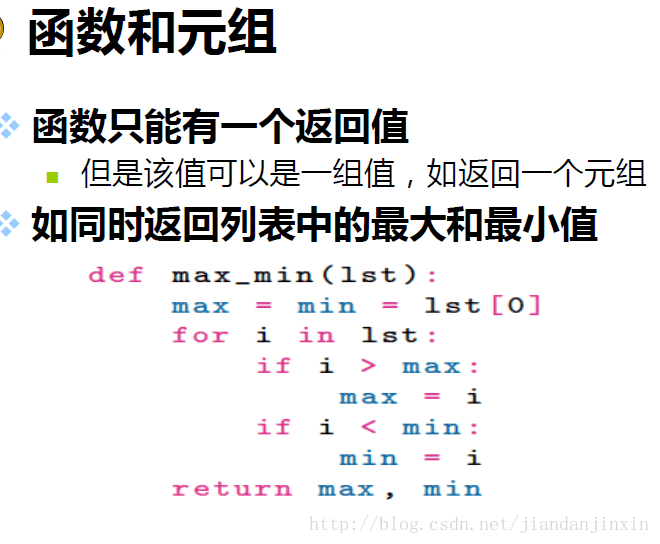
DSU模式(Decorate,Sort and Undecorate(DSU)模式)
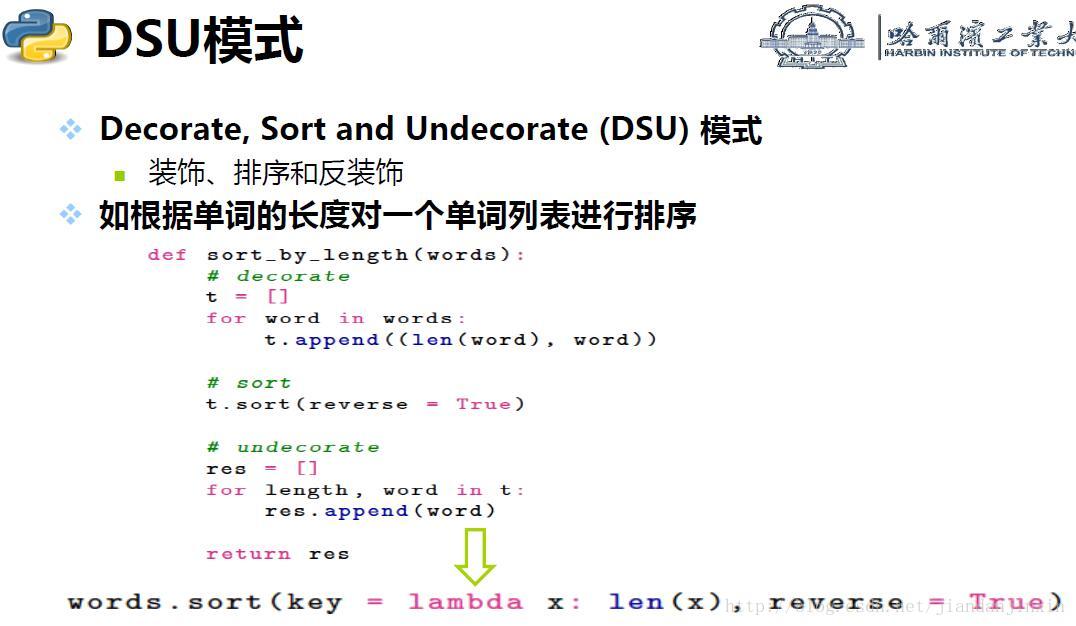
字典的生成
dict()
作用:dict() 函数用于创建一个字典。返回一个字典。
语法:
class dict(**kwarg)
class dict(mapping, **kwarg)
class dict(iterable, **kwarg)
参数说明:
**kwargs – 关键字
mapping – 元素的容器。
iterable – 可迭代对象dict() # 创建空字典
{}
dict(a=’a’, b=’b’, t=’t’) # 传入关键字
{‘a’: ‘a’, ‘b’: ‘b’, ‘t’: ‘t’}
dict(zip([‘one’, ‘two’, ‘three’], [1, 2, 3])) # 映射函数方式来构造字典
{‘three’: 3, ‘two’: 2, ‘one’: 1}
dict([(‘one’, 1), (‘two’, 2), (‘three’, 3)]) # 可迭代对象方式来构造字典
{‘three’: 3, ‘two’: 2, ‘one’: 1}
删除字典元素
a = {"a": "1", "b": "2"} for k,v in a.items(): if k == "b": del a[k] print a # {'a': '1'}
a = {“a”: “1”, “b”: “2”}
f = filter(lambda i: i[0] != “b” , a.items())
print f
[(‘a’, ‘1’)]
print a
{‘a’: ‘1’, ‘b’: ‘2’}
del dict2[‘name’]#删除键为“name”的条目。
dict2.clear()#删除 dict2 中所有的条目
del dict2#删除整个 dict2 字典
dict2.pop(‘name’)#删除并返回键为“name”的条目
最后
以上就是愉快蚂蚁最近收集整理的关于Python程序设计—车万翔程序流程图判断语句示例While循环结构break continue 语句for循环结构print n, 表示是打印在同一行中。print format 右对齐While VS for 循环缺省参数有返回值函数局部变量和全局变量 global字符串是不可变的示例: 人名游戏字符串比较字符串格式化正则表达式列表赋值python中list与array互相转换查找时间复杂度二分法排序内建排序函数嵌套列表DSU模式(Decorate,Sort and Undecorate(D的全部内容,更多相关Python程序设计—车万翔程序流程图判断语句示例While循环结构break内容请搜索靠谱客的其他文章。








发表评论 取消回复